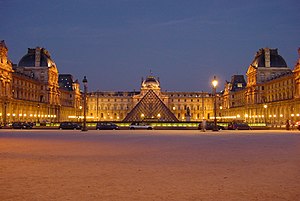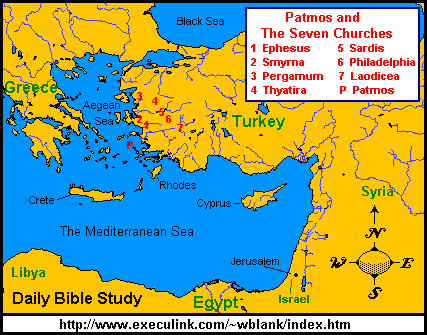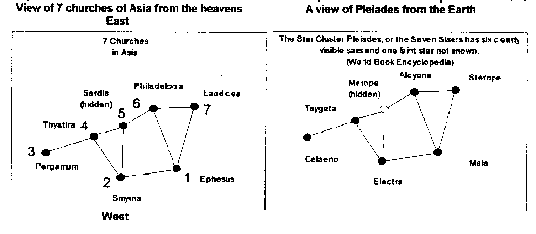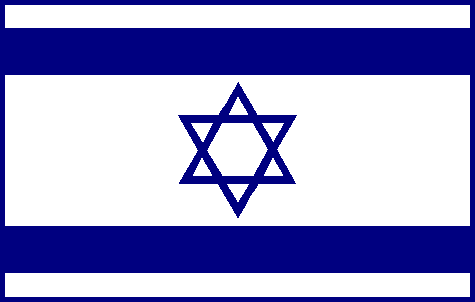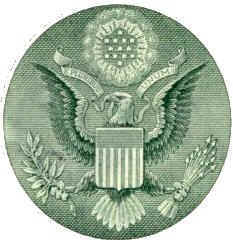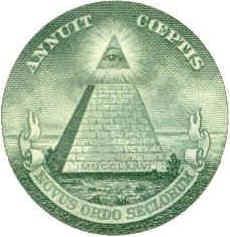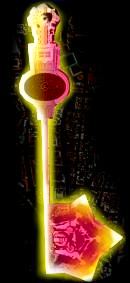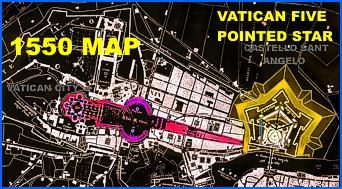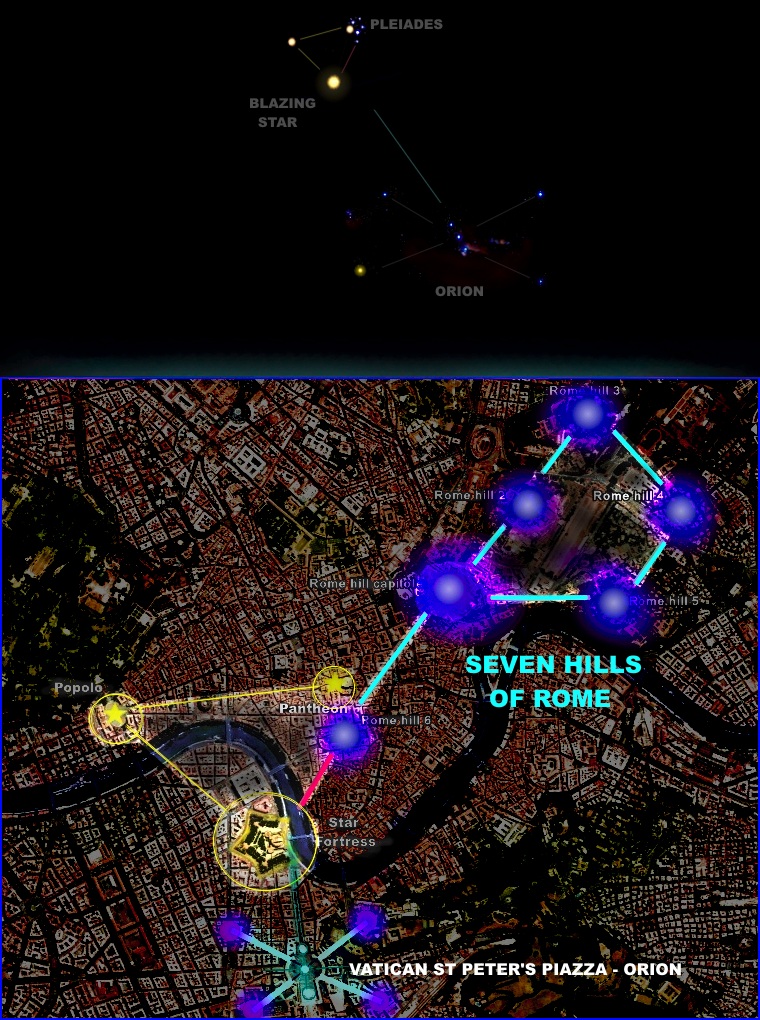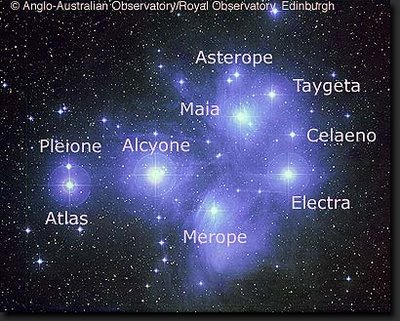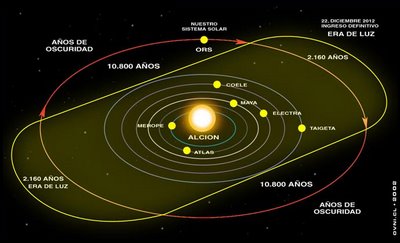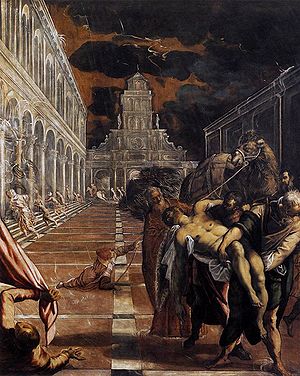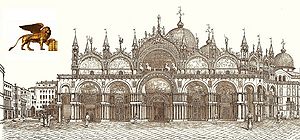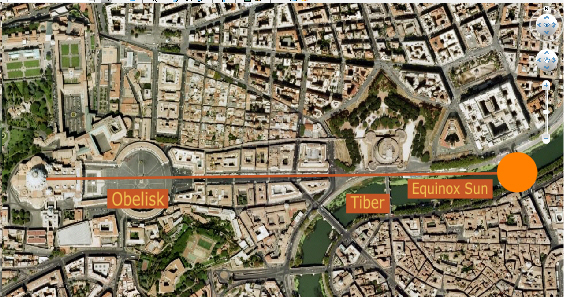|
|
General: VIRGEN CATOLICA=MARIA MAGDALENA
Escolher outro painel de mensagens |
|
|
DIOS TE SALVE MARIA DE LA IGLESIA CATOLICA ES ESOTERICO CON REFERENCIA A MARIA MAGDALENA
DIOS TE SALVE MARIA (OSHANAH RABBAH-21 DE TISHRI-UNGIMIENTO DE BETANIA)
LLENA ERES DE GRACIA (JUAN SIGNIFICA GRACIA)
EL SEÑOR ES CONTIGO
BENDITA TU ERES ENTRE TODAS LAS MUJERES Y BENDITO ES EL FRUTO DE TU VIENTRE JESUS (FRUTO=TERCER DIA DE LA CREACION=TERCER DIA DE LA SEMANA=MARTES=SANGRE=PLANETA ROJO=LINAJE-JESUS SIGNIFICA YHWH SALVA, OSEA QUE TAMBIEN TIENE REFERENCIA A OSHANAH RABBAH-21 DE TISHRI)
SANTA MARIA MADRE DE DIOS (MARIA-MIRYAM-MAR-TERCER DIA DE LA CREACION-MARTE-PLANETA ROJO-LINAJE-ROSE LINE. LA EXPRESION "MADRE DE DIOS" ES GRIALICA-DIOS (HECHOS 28:6-SALMOS 45:6,7-HEBREOS 1:8,9) ES EN RANGO, OSEA COMO REY Y NO COMO DIVINIDAD INTRINSECA)
RUEGA POR NOSOTROS PECADORES AHORA Y EN LA HORA DE NUESTRA MUERTE AMEN
|
|
A gauche, l'emblème maçonnique.
A droite, l'"étoile de David".
Deux barres ou lignes horizontales appliquées sur le compas et l'équerre maçonniques suffisent à faire de l'emblème une étoile de David.
|
|
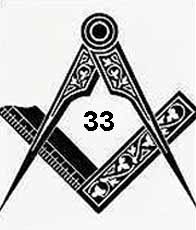
GEMATRIA AMEN (INGLES)=33
NOTEN QUE ESTAN LA AM (V CORTA EN EL CENTRO), OSEA UNA REFERENCIA A LA ESTRELLA DE 6 PUNTAS
33 is not only a numerical representation of “the Star of David,” but also the numerical equivalent of AMEN: 1+13+5+14=33...
NUMERO 33 (RELACION CON EL PERIODO SIDEREO DE MERCURIO) / ESTRELLA DE DAVID / INTERRELACION CON ORION EN FUNCION AL AFELIO Y PERIHELIO DE MERCURIO
En aquel tiempo, respondiendo Jesús, dijo:
Te alabo, Padre, Señor del cielo y de la tierra,
que hayas escondido estas cosas (la Gnosis, la Sabiduría Oculta)
de los sabios (de los eruditos) y de los entendidos, (de los intelectuales)
y las hayas revelado á los niños. (A los Iniciados). Así, Padre, pues que así agradó en tus ojos."
(Mateo 11: 25-26). (El cielo y la tierra, es la alquimia, osea la ESCALERA DE JACOB. La cuadratura del circulo es el patron matematico de la alquimia y esta basado, insisto, en el numero de oro. Justamente Salomon es un tipo del GRIAL.)
"¡Oh profundidad de las riquezas de la sabiduría (sophia)
y de la ciencia (gnwsiV, gnosis) de Dios!
¡Cuán incomprensibles son sus juicios, e inescrutables sus caminos!"
(Romanos, 11: 33). (Camino es una referencia a MERCURIO y Juicio es una referencia a ORION=ESPADA. EL NUMERO 33 NO ESTA POR CASUALIDAD. ES UNA REFERENCIA A LA ESTRELLA DE 6 PUNTAS. OSEA QUE EN LA MISMA PALABRA ESTA CODIFICADA LA RELACION ORION-MERCURIO-VIA LACTEA. PENSAR QUE HAY IGNORANTES QUE DICEN QUE LOS ESCRITORES DE LA BIBLIA NO CONOCIAN EL PI. ESA ES LA SOBERBIA DEL SER HUMANO QUE SE CREE TENER MAS DERECHOS QUE EL CREADOR. ASI ESTA EL MUNDO. SOLO EN JESUCRISTO ESTA LA VERDADERA LIBERACION DE LA EGOLATRIA, IDOLATRIA Y DEL PECADO.)
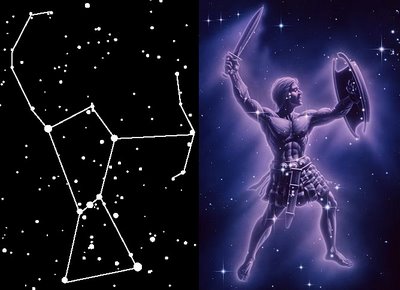
ESPADA=ORION
This shows Mercury's Inferior Conjunctions with Earth which make a triangle.
Now here are Mercury's Superior Conjunctions with Earth that make an inverted triangle.
Here is what we get when both of these synodic periods are added together.
The star of David.
33 SIMBOLIZAN A LOS DOS TRIANGULOS (INFERIOR Y SUPERIOR)
|
|
|
|
|
RELACION DE LA VIRGEN DE LOURDES CON ESTER (13 DE ADAR). En contexto a que la LUNA LLENA, rosh jodesh en luna llena, fue un 29 de febrero en 1858, la aparicion de la VIRGEN DE LOURDES FUE UN 13 DE ADAR. ¿¿¿¿¿¿?????????
Esta Pirámide de cristal, inaugurada en 1989, es obra del arquitecto estadounidense de origen chino Leoh Ming Pei. La pirámide tiene 666 rombos de vidrio y ocupa 1250 metros cuadrados, 35.4 metros de largo y 21.65 metros de altura. Fue una conmoción ciudadana, como la construcción del Centro pompidou. Ahora esa pirámide, además de práctica, a todo el mundo nos parece bonita y adecuada.
http://www.corazones.org/maria/lourdes_bernardita.htm
LAS APARICIONES EN LOURDES
El 11 de febrero, de 1858, era el día elegido para que el cielo se hiciera presente en la tierra. Ese día cambiaría para siempre, no solo la vida de Bernardita, sino que marca el comienzo de una fuente de gracia que ha brotado para toda la humanidad. Fuente que solo crece con el tiempo.
La madre de Bernardita permitió a esta ir con su hermana menor llamada María, y con otra niña, al campo a buscar leña seca. El lugar preferido para recoger leña era un campo que había frente a la gruta. Bernardita por su fragilidad física se quedó atrás.
Las compañeritas habían pasado ya el arroyo, pero Bernardita no se atrevía a meterse al agua porque estaba muy fría. Las demás insistían en que lo hiciese y cuando ella empezó a descalzarse, un ruido muy fuerte, parecido a un viento impetuoso, la obligó a levantar la cabeza y mirar hacia todos los lados.
!Qué es esto!,decía. Las hojas de los árboles estaban inmóviles.
El ruido del viento empezó de nuevo y mas fuerte en la gruta. Y ahí, en el fondo de la gruta, una maravillosa aparición se destacaba delante de ella. En este mismo momento empezaron a sonar las campanas de la Iglesia parroquial y se oía el canto del Ángelus.
Primera Aparición:
Una luz resplandeciente como la del sol, pero dulce y apacible como todo lo que viene del cielo, una Señora prodigiosamente bella se dejó ver por Bernardita. Vestía un traje blanco, brillante y de un tejido desconocido, ajustado al talle con un cinta azul; largo velo blanco caía hasta los pies envolviendo todo el cuerpo. Los pies, de una limpieza virginal y descalzos, parecían apoyarse sobre el rosal silvestre. Dos rosas brillantes de color de oro cubrían la parte superior de los pies de la Santísima Virgen. Juntas sus manos ante el pecho, ofrecían una posición de oración fervorosa; tenia entre sus dedos un largo rosario blanco y dorado con una hermosa cruz de oro.
Todo en Ella irradiaba felicidad, majestad, inocencia, bondad dulzura y paz. La frente lisa y serena, los ojos eran azul celeste llenos de amor y los labios mostraban suavidad y mansedumbre. La Señora parecía saludarla tiernamente mientras se inclinaba ante Bernardita.
Bernardita buscó su rosario (que traía siempre en su bolsillo), haciendo, como para defenderse, la señal de la cruz, pero su mano quedó paralizada. En ese momento la Virgen tomo la cruz del rosario e hizo la señal de la cruz y le dijo a Bernardita que lo hiciera como ella.
En ese momento su brazo paralizado quedó libre. La Señora empezó a pasar las cuentas del rosario entre sus dedos y Bernardita empezó a rezar el suyo. Al terminar, la Virgen le hizo señas con el dedo para que se acercara y entendiendo el brazo, se inclinó dulcemente y sonrió como despidiéndose de Bernardita. ¡La Visión había desaparecido!
Bernardita preguntó a las otras niñas si habían visto algo y al estas responderle que no, les contó su experiencia y les pidió silencio. Pero la hermana de Bernardita se lo contó a su mamá. La madre no le creyó y ordenó a Bernardita que se dejase de imaginaciones y que le estaba prohibido regresar a la gruta.
Esa noche, mientras rezaban el rosario en familia, Bernardita rompió en llantos, repitiendo su invocación favorita: "Oh María sin pecado concebida, rogad por nosotros que acudimos a ti"
|
|
| Eventos astronómicos |
| Luna nueva |
Vienes 15 Enero 1858 5.32' |
| Cuarto creciente |
Vienes 22 Enero 1858 16.50' |
| Luna llena |
Vienes 29 Enero 1858 9.12' |
| Cuarto menguante |
Jueves 7 Enero 1858 0.52' |
| Eclipse |
ningún eclipse de sol |
| ningún eclipse de luna |
|
La hora está en T.U. o sea tiempo universal del meridiano de Greenwich; las fases de la luna son aproximadamente con error máximo de 2m; pero en el eclipse de sol la señalización de la zona visible es solamente indicativa.
|
|
|
|
| Eventos astronómicos |
| Luna nueva |
Sàbado 13 Febrero 1858 22.13' |
| Cuarto creciente |
Domingo 21 Febrero 1858 0.54' |
| Luna llena |
Sàbado 27 Febrero 1858 22.5' |
| Cuarto menguante |
Vienes 5 Febrero 1858 21.21' |
| Eclipse |
ningún eclipse de sol |
| Eclisse parziale di Luna
Sàbado 27 Febrero 1858 22.16'
|
|
La hora está en T.U. o sea tiempo universal del meridiano de Greenwich; las fases de la luna son aproximadamente con error máximo de 2m; pero en el eclipse de sol la señalización de la zona visible es solamente indicativa.
|
|
24. Ester 3:7: En el mes primero, que es el mes de Nisán, en el año duodécimo del rey Asuero, fue echada Pur, esto es, la suerte, delante de Amán, suerte para cada día y cada mes del año; y salió el mes duodécimo, que es el mes de ADAR.
25. Ester 3:13: Y fueron enviadas cartas por medio de correos a todas las provincias del rey, con la orden de destruir, matar y exterminar a todos los judíos, jóvenes y ancianos, niños y mujeres, en un mismo día, en el día trece del mes duodécimo, que es el mes de ADAR, y de apoderarse de sus bienes.
26. Ester 8:12: en un mismo día en todas las provincias del rey Asuero, en el día trece del mes duodécimo, que es el mes de ADAR.
27. Ester 9:1: En el mes duodécimo, que es el mes de ADAR, a los trece días del mismo mes, cuando debía ser ejecutado el mandamiento del rey y su decreto, el mismo día en que los enemigos de los judíos esperaban enseñorearse de ellos, sucedió lo contrario; porque los judíos se enseñorearon de los que los aborrecían.
28. Ester 9:15: Y los judíos que estaban en Susa se juntaron también el catorce del mes de ADAR, y mataron en Susa a trescientos hombres; pero no tocaron sus bienes.
29. Ester 9:17: Esto fue en el día trece del mes de ADAR, y reposaron en el día catorce del mismo, y lo hicieron día de banquete y de alegría.
30. Ester 9:19: Por tanto, los judíos aldeanos que habitan en las villas sin muro hacen a los catorce del mes de ADAR el día de alegría y de banquete, un día de regocijo, y para enviar porciones cada uno a su vecino.
31. Ester 9:21: ordenándoles que celebrasen el día decimocuarto del mes de ADAR, y el decimoquinto del mismo, cada año,
|
|
|
|
|
|
|
Desde el 8 de diciembre (Dia de la inmaculada concepcion/janukah) hasta el 22/7 dia de MARIA MAGDALENA HAY 227 DIAS. La virgen de Lourdes tiene mucha relacion con JANUKAH. Cristo fue concebido en JANUKAH.
| Jewish month | Begins the
New moon of | John the Baptist | Jesus |
| 1. Abib / Nisan |
March-April |
Birth of John
15 Nisan |
4
|
| 2. Zif / Iyyar |
April-May |
|
5 |
| 3. Sivan |
May-June |
Conception of John
after 3rd Sabbath
|
6 |
| 4. Tammuz |
June-July |
1 |
7 |
| 5. Ab / Av |
July-August |
2 |
8 |
| 6. Elul |
August-September |
3 |
9 |
| 7. Ethanim / Tishri |
September-October |
4
|
Birth of Jesus
15 Tishri
|
| 8. Bul / Marheshvan / Heshvan |
October-November |
5 |
|
| 9. Chisleu / Chislev / Kislev |
November-December |
6
|
Conception of Jesus
25 Kislev ?
|
| 10. Tebeth / Tevet |
December-January |
7 |
1 |
| 11. Shebat / Shevat |
January-February |
8 |
2 |
| 12. Adar |
February-March |
9 |
3 |
INCLUSO LA VISITA DE LOS REYES MAGOS TAMBIEN FUE EN JANUKAH.
Comienza Januká (Fiesta judia)
5 diciembre, 2007 por Enrique 1 comentario
Jánuca (חֲנֻכָּה, y sin puntuación diacrítica חנוכה), llamada "la Fiesta de las Luminarias", es una festividad judía que se celebra por ocho días, y en la que se celebra la derrota de los helenos y la recuperación de la independencia judía a manos de los macabeos, y la posterior purificación del Templo de Jerusalén de los iconos paganos, del que se recuerda el milagro del candelabro, que ardió por ocho días consecutivos con una exigua cantidad de aceite.
 
|
|
|
Inmaculada Concepción
Porque preservaste a la Virgen María
de toda mancha de pecado original,
para que en la plenitud de la gracia
fuese digna madre de tu Hijo
y comienzo e imagen de la Iglesia,
esposa de Cristo,
llena de juventud y de limpia hermosura.
Purísima había de ser, Señor,
la Virgen que nos diera el Cordero inocente
que quita el pecado del mundo.
Purísima a la que, entre los hombres,
es abogada de gracia,
y ejemplo de santidad. (Prefacio de la Eucaristía de la Inmaculada Concepción)
|
|
|
|
|
|
|
|
Es curioso que es en la piramide de Louvre en donde aparece asesinado Sauniere aparece con la postura del HOMBRE DE VITRUBIO (cuadratura del circulo/Escalera de Jacob)
Argumento
El libro narra los intentos de Robert Langdon, Profesor de Iconografía Religiosa de la Universidad Harvard, para resolver el misterioso asesinato de Jacques Saunière ocurrido en el Museo del Louvre en París. El cuerpo de Saunière fue encontrado en el ala Denon del Louvre en la postura del Hombre de Vitruvio (dibujo realizado por Leonardo da Vinci) con un mensaje críptico escrito a su costado y un pentáculo dibujado en el pecho con su propia sangre. La interpretación que realiza tanto Langdon como la agente francesa Sophie Neveu, nieta de Saunière, los llevan a analizar otras obras como la Mona Lisa. El principal conflicto que presenta la novela radica alrededor de dos misterios:
- ¿Qué secreto intentó proteger Saunière?
- ¿Quién planeó este asesinato?
El desarrollo de la historia requiere la solución de varios acertijos y anagramas. La solución a cada uno de ellos se encuentra íntimamente ligada a la posible ubicación del Santo Grial y lo relativo a una misteriosa sociedad secreta llamada el Priorato de Sion, así como a los Caballeros templarios. La historia también envuelve a la organización católica del Opus Dei.
La novela es la segunda de una trilogía en la que Robert Langdon es protagonista, Ángeles y demonios, tenía lugar en Roma y trataba acerca de los Illuminati. Aunque ambos libros se centran en el mismo personaje, no es necesario leerlos en orden. El sucesor salió a la venta el 15 de septiembre de 2009 bajo el nombre de "The Lost Symbol".
|
|
|
OPINION-ESCRIBE SERGIO BERGMAN
El símbolo de la luz en dos fiestas religiosas
FUENTE LA NACION
El símbolo de la luz en dos fiestas religiosas
Por Sergio Bergman
Para LA NACION
La continuidad que el calendario nos propone este año es parte de una luz que no se corta. Janucá, la fiesta de las luminarias, se inició el viernes de la semana pasada y se celebra durante ocho días hasta hoy. Mañana será Nochebuena y el lunes, Navidad. Así las celebraciones judeocristianas evocan en el símbolo de la luz la dimensión de lo sagrado y nuestra capacidad de consagrar lo cotidiano en la obra de nuestras manos.
Janucá es la memoria judía de la gesta de los Macabeos que lucharon contra los seleucidas reconquistando el Templo de Jerusalén, encendiendo las luces y purificando el templo de la profanación pagana al consagrar su reinauguración. El milagro de la luz es celebración de lo sagrado en la capacidad de iluminar la oscuridad de lo profano, anticipando el milagro de la luz que aún en el judaísmo se espera en el Mesías que vendrá.
Navidad es la celebración de la luz del natalicio del niño Jesús, que naciendo judío es inscripto como Mesías por el cristianismo y es dado a luz por la Inmaculada Concepción de la Virgen María, que se hace así madre de Dios. El árbol de Navidad esta iluminado y el pesebre evoca esta luz del nacimiento del hijo de Dios, que en nombre del Padre y junto al Espíritu Santo se hace uno y trino, viniendo a la vida, desplegando su misión.
En este contexto del año que finaliza nuestra Argentina bendita está buscando su propia luz. Se trata de una crisis de energía que no sólo es eléctrica, sino espiritual. No debemos lamentarnos de la oscuridad en la que vivimos, la de la exclusión social, la baja calidad republicana de nuestra democracia, la inseguridad, la iniquidad, el estado de temor, la poca capacidad de aceptar diferencia de opinión que se traducen sin dialogar en oposición.
La energía espiritual de los argentinos está eclipsada en nuestra sociedad, la de las buenas noticias y la buena gente que trabaja con dedicación y amor en dar luz e iluminar con acciones ejemplares cómo reparar nuestra realidad. Se trata del espíritu emprendedor de hacer con coraje cívico una política, no de partidos sino de cogestión, donde los ciudadanos, que ya no sólo son habitantes ni clientes, están dispuestos a dar su propia luz.
La luz de cada argentino es la janukia , el milagro del propio aceite, la luminosa contribución, que es también la luz del árbol, del pesebre del nacimiento en un amor por el que Jesús ha venido y en la luz que lo hará volver cuando todos y cada uno de los argentinos den la luz de su contribución a lo mesiánico en ser instrumentos de la paz, la justicia y el amor.
La luz que no se corta en la Argentina es la del amor, símbolos en Janucá y en la Navidad, que hace de la Nochebuena el nacimiento de un nuevo día en el que cada uno brilla con su propia luz, donde en lugar de lamentar la oscuridad del hambre cada uno ilumina su vida y la de nuestra sociedad, cuando hacemos la luz y nos damos a luz al partir y bendecir el pan al compartirlo como hermanos y reconocernos como humanidad.
|
|
|
|
|
|
|
BELEN TIENE UN FUERTE NEXO CON RAQUEL/DAN/MARIA MAGDALENA
Génesis 30:6: Dijo entonces Raquel: Me juzgó Dios, y también oyó mi voz, y me dio un hijo. Por tanto llamó su nombre DAN.
Génesis 35:19: Así murió Raquel, y fue sepultada en el camino de Efrata, la cual es Belén.
Mateo
2:1 Cuando Jesús nació en Belén de Judea en días del rey Herodes, vinieron del oriente a Jerusalén unos magos, (Obviamente al aparecer BELEN es una referencia subliminal a RAQUEL, DAN, JACOB/ISRAEL)
2:2 diciendo: ¿Dónde está el rey de los judíos, que ha nacido? Porque su estrella hemos visto en el oriente, y venimos a adorarle. (ESTRELLA/STAR/EAST STAR/ISTAR. HAY UN OBVIO NEXO DE ESTER de la tribu de BENJAMIN hijo de RAQUEL)
2:3 Oyendo esto, el rey Herodes se turbó, y toda Jerusalén con él.
2:4 Y convocados todos los principales sacerdotes, y los escribas del pueblo, les preguntó dónde había de nacer el Cristo.
2:5 Ellos le dijeron: En Belén de Judea; porque así está escrito por el profeta:
2:6 Y tú, Belén, de la tierra de Judá, No eres la más pequeña entre los príncipes de Judá; Porque de ti saldrá un guiador, Que apacentará a mi pueblo Israel. (Observen el nexo ISRAEL/JACOB con la estrella de belen/raquel)
2:7 Entonces Herodes, llamando en secreto a los magos, indagó de ellos diligentemente el tiempo de la aparición de la estrella;
2:8 y enviándolos a Belén, dijo: Id allá y averiguad con diligencia acerca del niño; y cuando le halléis, hacédmelo saber, para que yo también vaya y le adore.
2:9 Ellos, habiendo oído al rey, se fueron; y he aquí la estrella que habían visto en el oriente iba delante de ellos, hasta que llegando, se detuvo sobre donde estaba el niño. (La estrella de BELEN esta obviamente interrelacionada con RAQUEL que es VIRGO/CASA DE PAN)
2:10 Y al ver la estrella, se regocijaron con muy grande gozo.
2:11 Y al entrar en la casa, vieron al niño con su madre María, y postrándose, lo adoraron; y abriendo sus tesoros, le ofrecieron presentes: oro, incienso y mirra. (LA VENIDA DE LOS REYES MAGOS FUE EN JANUKAH, SEGUNDA FIESTA DE LOS TABERNACULOS, OSEA EL 25 DE DICIEMBRE, QUE TAMBIEN ES cuando JESUCRISTO FUE CONCEBIDO EN EL CUERPO DE MARIA)
2:12 Pero siendo avisados por revelación en sueños que no volviesen a Herodes, regresaron a su tierra por otro camino.
2:13 Después que partieron ellos, he aquí un ángel del Señor apareció en sueños a José y dijo: Levántate y toma al niño y a su madre, y huye a Egipto, y permanece allá hasta que yo te diga; porque acontecerá que Herodes buscará al niño para matarlo. (Observen la interrelacion entre JOSE (SUBLIMINALMENTE INTERRELACIONADO CON EL JOSE QUE ES HIJO DE RAQUEL QUE GOBERNO EGIPTO, Y la busqueda de HERODES PARA MATAR AL NIÑO, ESOTERICAMENTE UN NEXO A LA CONSPIRACION DE LA IGLESIA QUE "MATO" AL HIJO DE CRISTO Y MARIA MAGDALENA. Aqui hay que rescatar el fuerte nexo con EGIPTO de RAQUEL. NO OLVIDEMOS EL NEXO SIRIO/LUCERO DEL ALBA CON JACOB/ISRAEL)
2:14 Y él, despertando, tomó de noche al niño y a su madre, y se fue a Egipto,
2:15 y estuvo allá hasta la muerte de Herodes; para que se cumpliese lo que dijo el Señor por medio del profeta, cuando dijo: De Egipto llamé a mi Hijo.
2:16 Herodes entonces, cuando se vio burlado por los magos, se enojó mucho, y mandó matar a todos los niños menores de dos años que había en Belén y en todos sus alrededores, conforme al tiempo que había inquirido de los magos.
2:17 Entonces se cumplió lo que fue dicho por el profeta Jeremías, cuando dijo:
2:18 Voz fue oída en Ramá, Grande lamentación, lloro y gemido; Raquel que llora a sus hijos, Y no quiso ser consolada, porque perecieron.
2:19 Pero después de muerto Herodes, he aquí un ángel del Señor apareció en sueños a José en Egipto,
2:20 diciendo: Levántate, toma al niño y a su madre, y vete a tierra de Israel, porque han muerto los que procuraban la muerte del niño.
2:21 Entonces él se levantó, y tomó al niño y a su madre, y vino a tierra de Israel.
2:22 Pero oyendo que Arquelao reinaba en Judea en lugar de Herodes su padre, tuvo temor de ir allá; pero avisado por revelación en sueños, se fue a la región de Galilea,
2:23 y vino y habitó en la ciudad que se llama Nazaret, para que se cumpliese lo que fue dicho por los profetas, que habría de ser llamado nazareno.
JUAN
7:37 En el último y gran día de la fiesta, Jesús se puso en pie y alzó la voz, diciendo: Si alguno tiene sed, venga a mí y beba. (El ultimo dia de la fiesta es el septimo dia de la fiesta de los tabernaculos, osea el 21 de tishri, oshanah rabbah. Aqui tenemos un nexo con BETANIA Y SU NEXO CON LOS PIES)
7:38 El que cree en mí, como dice la Escritura, de su interior correrán ríos de agua viva.
7:39 Esto dijo del Espíritu que habían de recibir los que creyesen en él; pues aún no había venido el Espíritu Santo, porque Jesús no había sido aún glorificado. (El ungimiento de los gentiles fue en OSHANAH RABBAH, osea HECHOS 10 Y 11)
7:40 Entonces algunos de la multitud, oyendo estas palabras, decían: Verdaderamente éste es el profeta.
7:41 Otros decían: Este es el Cristo. Pero algunos decían: ¿De Galilea ha de venir el Cristo?
7:42 ¿No dice la Escritura que del linaje de David, y de la aldea de Belén, de donde era David, ha de venir el Cristo? (¿Porque me relaciona la TORA nuevamente a BELEN/RAQUEL CON OSHANAH RABBAH? EN AGEO 2 tenemos un fuerte nexo, obviamente fuerte mente interrelacionado con el UNGIMIENTO DE BETANIA en el contexto a janukah y oshanah rabbah. EL MENSAJE DETRAS DE BELEN/RAQUEL/VIRGO ES MARIA MAGDALENA)
7:43 Hubo entonces disensión entre la gente a causa de él.
7:44 Y algunos de ellos querían prenderle; pero ninguno le echó mano.
7:45 Los alguaciles vinieron a los principales sacerdotes y a los fariseos; y éstos les dijeron: ¿Por qué no le habéis traído?
7:46 Los alguaciles respondieron: ¡Jamás hombre alguno ha hablado como este hombre!
7:47 Entonces los fariseos les respondieron: ¿También vosotros habéis sido engañados?
7:48 ¿Acaso ha creído en él alguno de los gobernantes, o de los fariseos?
7:49 Mas esta gente que no sabe la ley, maldita es.
7:50 Les dijo Nicodemo, el que vino a él de noche, el cual era uno de ellos:
7:51 ¿Juzga acaso nuestra ley a un hombre si primero no le oye, y sabe lo que ha hecho?
7:52 Respondieron y le dijeron: ¿Eres tú también galileo? Escudriña y ve que de Galilea nunca se ha levantado profeta.
7:53 Cada uno se fue a su casa;
AGEO 2/NEW AGE
Hageo Capítulo 2
1
En el mes séptimo, a los veintiún días del mes, vino palabra de Jehová por medio del profeta Hageo, diciendo: (A los 21 dias del septimo mes es OSHANAH RABBAH)
2 Habla ahora a Zorobabel hijo de Salatiel, gobernador de Judá, y a Josué hijo de Josadac, sumo sacerdote, y al resto del pueblo, diciendo: 3 ¿Quién ha quedado entre vosotros que haya visto esta casa en su gloria primera, y cómo la veis ahora? ¿No es ella como nada delante de vuestros ojos? (Relaciona "la casa" con "la gloria". Un obvio enlace esoterico con la "CASA DE LA VIUDA")
4 Pues ahora, Zorobabel, esfuérzate, dice Jehová; esfuérzate también, Josué hijo de Josadac, sumo sacerdote; y cobrad ánimo, pueblo todo de la tierra, dice Jehová, y trabajad; porque yo estoy con vosotros, dice Jehová de los ejércitos. 5 Según el pacto que hice con vosotros cuando salisteis de Egipto, así mi Espíritu estará en medio de vosotros, no temáis. 6 Porque así dice Jehová de los ejércitos: De aquí a poco yo haré temblar los cielos y la tierra, el mar y la tierra seca; 7 y haré temblar a todas las naciones, y vendrá el Deseado de todas las naciones; y llenaré de gloria esta casa, ha dicho Jehová de los ejércitos. 8 Mía es la plata, y mío es el oro, dice Jehová de los ejércitos. (NUESTRO SEÑOR JESUCRISTO AL EXPULSAR LOS "MERCADERES DEL TEMPLO" HACE UN FUERTE NEXO CON LA VIUDA. ES EN ESTE CONTEXTO QUE YHWH NOS DICE QUE EL ES EL DUEÑO DEL ORO. POR DINERO ES LA CONSPIRACION POR EL LINAJE)
9 La gloria postrera de esta casa será mayor que la primera, ha dicho Jehová de los ejércitos; y daré paz en este lugar, dice Jehová de los ejércitos. (Obvio que todas estas profecias se cumplieron en JESUCRISTO pero aparentemente la palabra no descarta UN NUEVO MESIAS)
10
A los veinticuatro días del noveno mes, en el segundo año de Darío, vino palabra de Jehová por medio del profeta Hageo, diciendo: (24 DEL NOVENO MES ES JANUKAH O CHANUKAH, LA SEGUNDA FIESTA DE LOS TABERNACULOS. EN JANUKAH FUE CONCEBIDO JESUCRISTO EN EL CUERPO DE MARIA MADRE Y FUE VISITADO TAMBIEN POR LOS REYES. LA VIRGEN DE LOURDES, "INMACULADA CONCEPCION" MEDIANTE, TIENE ESTA CONNOTACION. ESTO explica EL NEXO DE LA PIRAMIDE DE LOUVRE/LOURDES EN EL CODIGO DA VINCI. La piramide es la alquimia, osea la ESCALERA DE JACOB)
11 Así ha dicho Jehová de los ejércitos: Pregunta ahora a los sacerdotes acerca de la ley, diciendo: 12 Si alguno llevare carne santificada en la falda de su ropa, y con el vuelo de ella tocare pan, o vianda, o vino, o aceite, o cualquier otra comida, ¿será santificada? Y respondieron los sacerdotes y dijeron: No. 13 Y dijo Hageo: Si un inmundo a causa de cuerpo muerto tocare alguna cosa de estas, ¿será inmunda? Y respondieron los sacerdotes, y dijeron: Inmunda será. 14 Y respondió Hageo y dijo: Así es este pueblo y esta gente delante de mí, dice Jehová; y asimismo toda obra de sus manos; y todo lo que aquí ofrecen es inmundo. 15 Ahora, pues, meditad en vuestro corazón desde este día en adelante, antes que pongan piedra sobre piedra en el templo de Jehová. 16 Antes que sucediesen estas cosas, venían al montón de veinte efas, y había diez; venían al lagar para sacar cincuenta cántaros, y había veinte. 17 Os herí con viento solano, con tizoncillo y con granizo en toda obra de vuestras manos; mas no os convertisteis a mí, dice Jehová. 18 Meditad, pues, en vuestro corazón, desde este día en adelante, desde el día veinticuatro del noveno mes, desde el día que se echó el cimiento del templo de Jehová; meditad, pues, en vuestro corazón. (PARA EL JUDIO CONSTRUIR ES SINONIMO DE TENER UN HIJO)
19 ¿No está aún la simiente en el granero? Ni la vid, ni la higuera, ni el granado, ni el árbol de olivo ha florecido todavía; mas desde este día os bendeciré.
20
Vino por segunda vez palabra de Jehová a Hageo, a los veinticuatro días del mismo mes, diciendo: 21 Habla a Zorobabel gobernador de Judá, diciendo: Yo haré temblar los cielos y la tierra; ("LOS CIELOS Y LA TIERRA" ES UNA REFERENCIA ESOTERICA A LA ESCALERA DE JACOB. BABEL ES PUERTA DE DIOS, osea volvemos con LA ESCALERA DE JACOB)
22 y trastornaré el trono de los reinos, y destruiré la fuerza de los reinos de las naciones; trastornaré los carros y los que en ellos suben, y vendrán abajo los caballos y sus jinetes, cada cual por la espada de su hermano. 23 En aquel día, dice Jehová de los ejércitos, te tomaré, oh Zorobabel hijo de Salatiel, siervo mío, dice Jehová, y te pondré como anillo de sellar; porque yo te escogí, dice Jehová de los ejércitos.
En aquel tiempo, respondiendo Jesús, dijo:
Te alabo, Padre, Señor del cielo y de la tierra,
que hayas escondido estas cosas (la Gnosis, la Sabiduría Oculta)
de los sabios (de los eruditos) y de los entendidos, (de los intelectuales)
y las hayas revelado á los niños. (A los Iniciados).
Así, Padre, pues que así agradó en tus ojos."
(Mateo 11: 25-26).
"¡Oh profundidad de las riquezas de la sabiduría (sophia)
y de la ciencia (gnwsiV, gnosis) de Dios!
¡Cuán incomprensibles son sus juicios, e inescrutables sus caminos!"
(Romanos, 11: 33).
"Y esto ruego, que vuestro Amor (agape) abunde aun más y más
en Ciencia (gnwsei=gnosis)
y en todo Conocimiento, ("epignosis": Conocimiento (Gnosis) Pleno.)"
(Filipenses, 1: 9).
MATEO
11:25 En aquel tiempo, respondiendo Jesús, dijo: Te alabo, Padre, Señor del cielo y de la tierra, porque escondiste estas cosas de los sabios y de los entendidos, y las revelaste a los niños. (LA EXPRESION "DEL CIELO Y DE LA TIERRA" ES UNA REFERENCIA ESOTERICA A LA ESCALERA DE JACOB, LA ALQUIMIA, EL SANTO GRIAL)
11:26 Sí, Padre, porque así te agradó.
11:27 Todas las cosas me fueron entregadas por mi Padre; y nadie conoce al Hijo, sino el Padre, ni al Padre conoce alguno, sino el Hijo, y aquel a quien el Hijo lo quiera revelar.
11:28 Venid a mí todos los que estáis trabajados y cargados, y yo os haré descansar.
11:29 Llevad mi yugo sobre vosotros, y aprended de mí, que soy manso y humilde de corazón; y hallaréis descanso para vuestras almas;
  11:30 porque mi yugo es fácil, y ligera mi carga. 11:30 porque mi yugo es fácil, y ligera mi carga.
|
|
|
|
|
La estrella de Belén:
Una escena organizada por astrólogos
por Patrice Guinard, Doctor en Letras
-- traducción Alhena Casanova -- |
"Habiendo nacido Jesús en Belén de Judea, en el tiempo del rey Herodes, he aquí que unos magos venidos de Oriente llegaron a Jerusalén y preguntaron: "Donde esta el rey de los Judíos que acaba de nacer? Hemos visto elevarse su estrella y hemos venido a rendirle homenaje" (Mateo, 2.1-2)
El texto del Evangelio de Mateo habría sido redactado hacia el año 90 D.C., es decir cinco años después del de Lucas, 25 años después del de Marcos, y cerca de un siglo después del nacimiento de Cristo: sus mas antiguos fragmentos conocidos son incluso posteriores a un siglo.
Únicamente este texto incorpora el párrafo sobre la estrella. Según la exposición de Lucas, un ángel anuncia el nacimiento de Jesús a un grupo de pastores. Qué podemos creer de la exposición de Mateo, que figura también en el Evangelio apócrifo de Juan? Se sabe que un astro mencionado en una visión de Balaam (Números, 24.17) fue interpretado como indicador del nacimiento de un mesías. Las primeras preguntas que surgen conciernen a la formulación del texto: Quiénes son esos magos? De dónde vienen? Qué edad tenia el niño en el momento de su llegada? Cuál es la naturaleza del astro? Cuál es su posición celeste?
No creo que el texto de Mateo sea una leyenda sin fundamento real, con una mención astronómica destinada a convencer a los ciudadanos del imperio romano mediante representaciones que les fueran familiares. Esta construcción artificial no hubiera tenido ninguna chance de éxito. Por el contrario ha de verse en el texto una representación creíble, destinada en principio a los Judíos o a algunas franjas de este pueblo, y referida a imágenes y valores que estaban presentes en su espíritu. Pero cuáles eran estos?
Los magos, que no se convertirán en reyes sino mucho mas tarde en la imaginación popular, eran hombres de conocimiento, sabios: los traductores acuerdan incluso en nombrarlos como astrólogos. Vienen ellos de Oriente, o simplemente del este de Jerusalén? Se ha evocado a los Caldeos, en razón de sus conocimientos astronómicos, y a los Persas en razón de la naturaleza mesiánica de algunos escritos del Zoroastrismo. Se ha evocado también a exiliados pertenecientes a la diáspora judía.
Según el texto, el niño recién habría nacido: esto puede significar que él precisamente acaba de nacer, y que en consecuencia los astrólogos visitantes no vienen de muy lejos, o que él ha nacido hace algunas semanas o incluso algunos meses, tiempo suficiente para un viaje, digamos, desde Babilonia. Estos "magos" debieron estar muy determinados para recorrer unos 1500 kilómetros a fin de rendir homenaje a un recién nacido destinado a un porvenir real. El hecho astronómico debió ser de una importancia considerable. Sin embargo, no se halla en las tabletas babilónicas ningún rastro de este particular hecho , ni huella en ninguna época, de una conjunción o fenómeno astronómico que revistiera tal importancia, ni, lo que es peor, algún interés, entre los presagios que se han conservado, en cuanto al destino de la región de Amurru, la región del oeste en la topología babilónica. La cuestión crucial es la siguiente: Qué interés hubieran tenido esos astrólogos y astrónomos caldeos en cuanto a los destinos del pueblo judío? En cambio si estos sabios hubieran sido judíos, miembros de la diáspora, y en contacto con sabios autóctonos, subsiste aun la cuestión de la distancia temporal entre el nacimiento del niño y su llegada a Jerusalén.
Qué realidad encubre el astro del futuro rey de los Judíos? Se han propuesto decenas de hipótesis, entre ellas : Venus (la cual, cualquiera sea su situación, no es una manifestación astronómica particularmente rara), el cometa Halley (que fue visible únicamente en el año 12 A.C.), una conjunción planetaria (se han propuesto numerosas variantes), una ocultación planetaria, entre ellas la de Júpiter por la Luna los días 20 de marzo y 17 de abril del año 6 A.C., hipótesis del astrónomo Michael Molnar [1], actualmente de moda entre los especialistas, ya que esta fecha corresponde a aquélla, aproximativa y calculada , del nacimiento del Cristo, luego de haberse corregido el descuento incorporado por Dionysius Exiguus a fin de establecer la fecha de la Navidad en el año 525 D.C.
Diversos autores han formulado criticas a esta hipótesis (entre ellos los astrónomos Seymour y Kidger) : las ocultaciones de Júpiter por la Luna son bastante comunes, las mencionadas para el año 6 fueron prácticamente invisibles, aun en el caso de que teóricamente, hubieran podido ser calculadas, aunque es bastante improbable que los conocimientos astronómicos de la época lo permitieran..[2]
Cuál es la situación del astro en el momento del nacimiento y en el momento de la llegada de los astrólogos al lugar? "Hemos visto elevarse su estrella" - declaran, lo cual significa o bien que ya no esta allí, o que aun podría encontrarse allí?
La conjunción del año 7
Kepler, quien pensaba que la estrella de los Magos era una estrella nueva, es decir una nova, similar a aquélla que él había observado en 1604. [3], hace notar la coincidencia de su aparición con la conjunción Júpiter-Saturno del año 7 A.C. en modo similar a la del año 1604 D.C., relacionando la primera con el nacimiento del cristianismo y la concepción de Cristo, y la segunda con la Reforma. En forma más general Kepler indica que el gran ciclo de los 3 planetas más lentos (el equivalente del ciclo Plutón-Neptuno-Urano de los astrólogos modernos) parecía marcar las grandes fases de la historia, especialmente la bíblica.[4]
La hipótesis del nacimiento de Cristo durante el verano del año 7 A.C. parece la mas probable. Ha sido propuesta inicialmente por el astrólogo John Addey quien da la fecha del 22 de agosto 7 A.C., por la tarde, para la elevación helíaca de la conjunción Júpiter-Saturno.[5] Otro astrólogo, el alemán Walter Koch, propone el tema hipotético del nacimiento de Cristo para el 14 septiembre 7 A.C. a la caída del sol. [6]
Konradin Ferrari d'Occhieppo, astrónomo de la universidad de Wien, da un nacimiento para el 15 de septiembre 7 A.C. por la tarde.[7] Según el astrónomo David Hughes, esta fecha seria astronómicamente la mejor fundamentada : los monjes zoroastrianos habrían decidido que el nuevo mesías nacería el 15 de septiembre 7 A.C. por la tarde (hacia las 17h45), al tiempo de la elevación helíaca de la conjunción Júpiter-Saturno.[8] Recientemente, Percy Seymour ha sostenido esta hipótesis del 15 de septiembre 7 A.C. alrededor de las 18 horas.[9]

Aun si durante el año 7 A.C., en razón de sus latitudes, Júpiter y Saturno hubieran estado en conjunción en varias ocasiones, en el mejor caso a 1 grado de orbe, la triple conjunción de los tres planetas mas lentos conocidos por los astrónomos de la época (Marte, Júpiter, Saturno) tuvo lugar por primera vez luego de 850 años en la constelación o el signo de Piscis, y el Cristo habría nacido bajo la oposición del Sol en Virgo a la conjunción Júpiter-Saturno en su elevación. Esta hipótesis da explicación a las palabras de los magos a Herodes: "Hemos visto su astro elevándose" lo que permitiría suponer que este "astro" no ha desaparecido aun y que podría ser observado nuevamente, y explica también el enigma de la metáfora de la inmaculada concepción (el texto del Evangelio "nacido de una virgen" se interpretaría como "nacido en el signo de la Virgen"), la asimilación del acontecimiento astronómico a la venida de un Mesías, rey de los Judíos (elevación de un planeta real, benéfico, en conjunción con Saturno, el planeta de los Judíos), el símbolo de Piscis que habría sido conservado como signo de identificación y de reconocimiento entre las primeras comunidades cristianas.
La hipótesis no responde a dos grandes preguntas: por qué precisamente esta conjunción? Y especialmente (pregunta que no ha sido planteada hasta ahora) : por qué estos magos, monjes zoroastrianos según David Hughes, se habrían interesado en un hecho que a priori no les concernía?
El astrónomo Mark Kidger, quien no cita ni a d'Occhieppo, ni a Seymour, menciona 64 conjunciones Júpiter-Saturno ocurridas durante el primer milenio precedente al nacimiento de Cristo, y siete conjunciones triples (con Marte) entre ellas la de los años 146-145 A.C. en Cáncer con un orbe de 10 minutos de grado. Dicho de otro modo, solo 140 años antes del acontecimiento del año 7, hubo una conjunción más espectacular aun pues tuvo mayor precisión, lo cual bien hubiera podido atraer también la atención de los astrólogos atentos. Como lo señala Kidger : "Si el único factor a tomar en cuenta fuera la conjunción, los magos, viendo esta conjunción triple y espectacular [la del año 145 A.C.] hubieran debido llegar a Jerusalén 139 años antes!" [10]
El hecho de que la conjunción del año 7 se sitúe en Piscis no me parece un argumento convincente : después de todo ni Manilius ni Doroteo asocian Palestina o el pueblo judío con Piscis, y Ptolomeo coloca a Judea bajo el signo de Aries. Y qué corografía no contradice a otra! [11]
Cuando leí, hace ya una decena de años, la obra de David Hughes, quedé persuadido de que él estaba en lo cierto. Similar reacción tuvo Seymour: "David Hughes estuvo de acuerdo con d'Occhieppo, y yo también lo estoy" [12] Sin embargo, la elección del 15 de septiembre por ser el único día de la oposición "exacta" (sin tener en cuenta la latitud) de Júpiter al Sol, nunca me ha convencido. Por qué no tomar el día de la oposición del Sol a Saturno, o mejor aun aquel de su oposición al centro de la conjunción? El astrólogo alemán Walter Koch ha sido uno de los primeros en proponer una fecha probable en este contexto, la del 14 de septiembre. Yo mismo pensaba que el 16 de septiembre era mas conveniente, en razón del papel que cumple la Luna en la configuración, es decir su posición en doble cuadratura a la famosa oposición (según las efemérides de que dispongo).
Cualquiera sea la fecha considerada, anterior o posterior al 15 de septiembre, ella debe dar solución a las preguntas antes mencionadas, es decir : De dónde habrían venido estos astrólogos, y cuáles pudieron ser sus motivaciones para encarar semejante viaje y venir a rendir homenaje a un niño judío? Por qué lo hicieron en esta fecha del año 7? Por qué no lo hicieron, dado el caso, 140 años antes ya que esta conjunción no sería tan excepcional como parecen creer sus defensores?
Mi hipótesis es como sigue : esta conjunción no es la única teoría puesta en juego para determinar la fecha del nacimiento del Mesías, sino que existe otra teoría concomitante, otro hecho de naturaleza astronómica o astrológica, el cual, junto con el primero, hace de este nacimiento el hecho excepcional esperado. Un indicador, aun si es plausible y convincente, no deja de ser una presunción ; la unión de varios indicadores, sin relación entre sí pero concordantes, puede devenir en certeza.
http://cura.free.fr/esp/20jesus.html |
|
|
|
|
|
Apocalipsis 3:7: Escribe al ángel de la iglesia en Filadelfia: Esto dice el Santo, el Verdadero, el que tiene la LLAVE de David, el que abre y ninguno cierra, y cierra y ninguno abre:
The seven stars are not mentioned again until Rev. 1:16, 1:20, 2:1, 3:1 as the seven churches in Asia
ALSION=PHI-LADEL-PHI-A
X
Apocalipsis
3:1 Escribe al ángel de la iglesia en Sardis: El que tiene los siete espíritus de Dios, y las siete estrellas, dice esto: Yo conozco tus obras, que tienes nombre de que vives, y estás muerto.
3:2 Sé vigilante, y afirma las otras cosas que están para morir; porque no he hallado tus obras perfectas delante de Dios.
3:3 Acuérdate, pues, de lo que has recibido y oído; y guárdalo, y arrepiéntete. Pues si no velas, vendré sobre ti como ladrón, y no sabrás a qué hora vendré sobre ti.
3:4 Pero tienes unas pocas personas en Sardis que no han manchado sus vestiduras; y andarán conmigo en vestiduras blancas, porque son dignas.
3:5 El que venciere será vestido de vestiduras blancas; y no borraré su nombre del libro de la vida, y confesaré su nombre delante de mi Padre, y delante de sus ángeles.
3:6 El que tiene oído, oiga lo que el Espíritu dice a las iglesias.
3:7 Escribe al ángel de la iglesia en Filadelfia: Esto dice el Santo, el Verdadero, el que tiene la llave de David, el que abre y ninguno cierra, y cierra y ninguno abre: (sexta iglesia de apocalipsis)
3:8 Yo conozco tus obras; he aquí, he puesto delante de ti una puerta abierta, la cual nadie puede cerrar; porque aunque tienes poca fuerza, has guardado mi palabra, y no has negado mi nombre.
3:9 He aquí, yo entrego de la sinagoga de Satanás a los que se dicen ser judíos y no lo son, sino que mienten; he aquí, yo haré que vengan y se postren a tus pies, y reconozcan que yo te he amado. (SEXTA IGLESIA/ESTRELLA DE SEIS PUNTAS. Vemos una conexion con JUAN 7:38,39 /OSHANAH RABBAH. HAY UNA CONEXION ENTRE ALSION/PHILADELPHIA CON OSHANAH RABBAH. El seis es el numero del sexto dia de la creacion cuando fueron creados ADAN Y EVA/GENESIS 1:26. La estrella de seis puntas tiene connotacion de relasion sexual. OSHANAH RABBAH ES SINONIMO DEL UNGIMIENTO DE BETANIA)
 3:10 Por cuanto has guardado la palabra de mi paciencia, yo también te guardaré de la hora de la prueba que ha de venir sobre el mundo entero, para probar a los que moran sobre la tierra. 3:11 He aquí, yo vengo pronto; retén lo que tienes, para que ninguno tome tu corona. 3:12 Al que venciere, yo lo haré columna en el templo de mi Dios, y nunca más saldrá de allí; y escribiré sobre él el nombre de mi Dios, y el nombre de la ciudad de mi Dios, la nueva Jerusalén, la cual desciende del cielo, de mi Dios, y mi nombre nuevo. 3:10 Por cuanto has guardado la palabra de mi paciencia, yo también te guardaré de la hora de la prueba que ha de venir sobre el mundo entero, para probar a los que moran sobre la tierra. 3:11 He aquí, yo vengo pronto; retén lo que tienes, para que ninguno tome tu corona. 3:12 Al que venciere, yo lo haré columna en el templo de mi Dios, y nunca más saldrá de allí; y escribiré sobre él el nombre de mi Dios, y el nombre de la ciudad de mi Dios, la nueva Jerusalén, la cual desciende del cielo, de mi Dios, y mi nombre nuevo.
3:13 El que tiene oído, oiga lo que el Espíritu dice a las iglesias. 3:14 Y escribe al ángel de la iglesia en Laodicea: He aquí el Amén, el testigo fiel y verdadero, el principio de la creación de Dios, dice esto: 3:15 Yo conozco tus obras, que ni eres frío ni caliente. ¡Ojalá fueses frío o caliente! 3:16 Pero por cuanto eres tibio, y no frío ni caliente, te vomitaré de mi boca. 3:17 Porque tú dices: Yo soy rico, y me he enriquecido, y de ninguna cosa tengo necesidad; y no sabes que tú eres un desventurado, miserable, pobre, ciego y desnudo. 3:18 Por tanto, yo te aconsejo que de mí compres oro refinado en fuego, para que seas rico, y vestiduras blancas para vestirte, y que no se descubra la vergüenza de tu desnudez; y unge tus ojos con colirio, para que veas. 3:19 Yo reprendo y castigo a todos los que amo; sé, pues, celoso, y arrepiéntete. 3:20 He aquí, yo estoy a la puerta y llamo; si alguno oye mi voz y abre la puerta, entraré a él, y cenaré con él, y él conmigo. 3:21 Al que venciere, le daré que se siente conmigo en mi trono, así como yo he vencido, y me he sentado con mi Padre en su trono. 3:22 El que tiene oído, oiga lo que el Espíritu dice a las iglesias.
|
|
|
|
|
|
EL SANTO GRIAL ESTA CODIFICADO EN EL DISEÑO DEL VATICANO EN FUNCION A LAS PLEYADES
1 Pedro 5:13: La iglesia que está en Babilonia, elegida juntamente con vosotros, y Marcos mi HIJO, os saludan.
Versiculo que esta en clave. INTERRELACIONA BABILONIA (BABYLON EN INGLES-BABY ES BEBE) CON LA IGLESIA/MARIA MAGDALENA Y JUAN MARCOS. OBVIAMENTE PEDRO LE LLAMA "MI HIJO" EN UN CONTEXTO A QUE EL MISMO FUE HIJO DE NUESTRO SEÑOR JESUCRISTO Y MARIA MAGDALENA. ¿PORQUE EL FUERTE NEXO JUAN MARCOS CON PEDRO?
Mateo
16:1 Vinieron los fariseos y los saduceos para tentarle, y le pidieron que les mostrase señal del cielo.
16:2 Mas él respondiendo, les dijo: Cuando anochece, decís: Buen tiempo; porque el cielo tiene arreboles.
16:3 Y por la mañana: Hoy habrá tempestad; porque tiene arreboles el cielo nublado. ¡Hipócritas! que sabéis distinguir el aspecto del cielo, ¡mas las señales de los tiempos no podéis!
16:4 La generación mala y adúltera demanda señal; pero señal no le será dada, sino la señal del profeta Jonás. Y dejándolos, se fue.
16:5 Llegando sus discípulos al otro lado, se habían olvidado de traer pan.
16:6 Y Jesús les dijo: Mirad, guardaos de la levadura de los fariseos y de los saduceos. (¿fiesta de las levaduras? ¿Porque PEDRO APARECE A MARIA LA MADRE DE JUAN MARCOS EN CONTEXTO A LA FIESTA DE LAS LEVADURAS en contexto a HECHOS 12:12? ¿PORQUE JUAN MARCOS ES UN NEO-JONAS YA QUE NO FUE CON PABLO A MALTA en contexto a HECHOS 12, 13, 14 Y 15?)
16:7 Ellos pensaban dentro de sí, diciendo: Esto dice porque no trajimos pan.
16:8 Y entendiéndolo Jesús, les dijo: ¿Por qué pensáis dentro de vosotros, hombres de poca fe, que no tenéis pan?
16:9 ¿No entendéis aún, ni os acordáis de los cinco panes entre cinco mil hombres, y cuántas cestas recogisteis?
16:10 ¿Ni de los siete panes entre cuatro mil, y cuántas canastas recogisteis?
16:11 ¿Cómo es que no entendéis que no fue por el pan que os dije que os guardaseis de la levadura de los fariseos y de los saduceos?
16:12 Entonces entendieron que no les había dicho que se guardasen de la levadura del pan, sino de la doctrina de los fariseos y de los saduceos.
16:13 Viniendo Jesús a la región de Cesarea de Filipo, preguntó a sus discípulos, diciendo: ¿Quién dicen los hombres que es el Hijo del Hombre? (CESAREA DE PHI-LIPO ESTABA EN LA TRIBU DE DAN AL PIE DEL MONTE HERMON. DAN TIENE FUERTE NEXO CON LA VIUDA. EL CALENDARIO JULIANO NO FUE POR CASUALIDAD QUE DENOMINO A JULIO EL SEPTIMO MES Y EN FUNCION A LA ESTRELLA SIRIO. EL OJO OMNISCIENTE QUE APARECE EN LA PARTE SUPERIOR DE LA PIRAMIDE TRUNCADA SIMBOLIZA A SIRIO/UN OJO EN EL CIELO. EL CALENDARIO JULIANO-GREGORIANO DE ORIGEN EGIPCIO ESTA DISEÑADO EN FUNCION A LA ESTRELLA SIRIO. EL CALENDARIO DE NOE TENDRIA ESTE PATRON)
16:14 Ellos dijeron: Unos, Juan el Bautista; otros, Elías; y otros, Jeremías, o alguno de los profetas.
16:15 El les dijo: Y vosotros, ¿quién decís que soy yo?
16:16 Respondiendo Simón Pedro, dijo: Tú eres el Cristo, el Hijo del Dios viviente.
16:17 Entonces le respondió Jesús: Bienaventurado eres, Simón, hijo de Jonás, porque no te lo reveló carne ni sangre, sino mi Padre que está en los cielos. ("hijo de Jonas" tiene nexo con la "señal de Jonas")
16:18 Y yo también te digo, que tú eres Pedro, y sobre esta roca edificaré mi iglesia; y las puertas del Hades no prevalecerán contra ella. (NUMERO DE ORO) (MARIA MAGDALENA SIMBOLIZA A LA IGLESIA/NUEVA JERUSALEM. AQUI NUESTRO SEÑOR INDUDABLEMENTE BUSCA UN NEXO ESOTERICO CON SU ESPOSA Y EL GRIAL-S-OPHI-A/SABIDURIA-ONE EN EL BILLETE DE UN DOLAR ES UN ANAGRAMA DE NOE)
El Número de Oro; Phi; la Divina Proporción

16:19 Y a ti te daré las llaves del reino de los cielos; y todo lo que atares en la tierra será atado en los cielos; y todo lo que desatares en la tierra será desatado en los cielos.
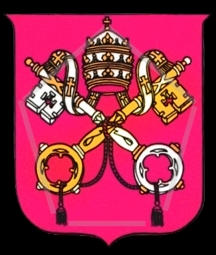

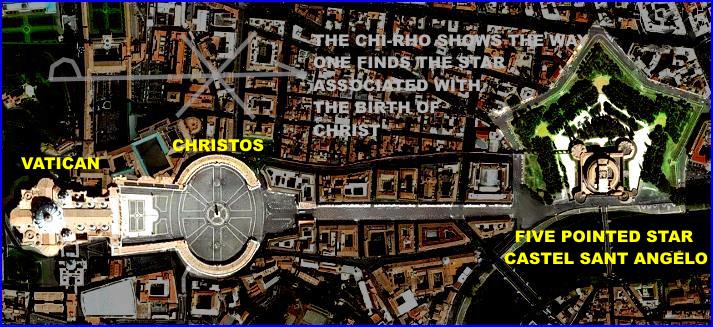
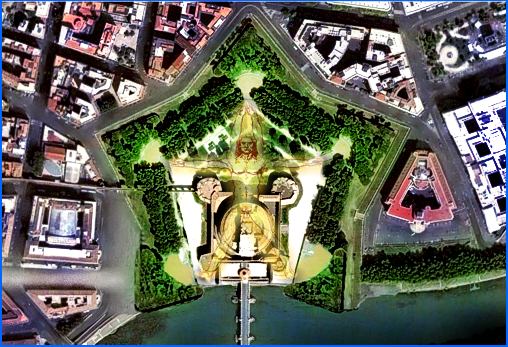 
El numero 5 en la Biblia es el numero de la gracia. Es el numero de la alquimia, la cuadratura del circulo simbolizada en la Biblia por la escalera de Jacob. En el mismo diseño del numero esta codificada en su parte superior el cuadrado y en su parte inferior el circulo. Concretamente en dicha cuadratura, esta la simbologia espiritual del SANTO GRIAL osea el linaje entre Nuestro Señor Jesucristo y Maria Magdalena. La gran piramide de Keop, construida con el mismo patron de la Nueva Jerusalen, esta diseñada en funcion a la CUBICACION DE UNA ESFERA en funcion al NUMERO DE ORO PHI=1.618033 Y AL MISMO NUMERO PI=3.14. DIOS MANEJA LA HISTORIA Y LA CIENCIA. LA LLAVE DE DAVID ESTA CODIFICADA EN APOCALIPSIS EN LA IGLESIA DE PHILADELPHIA, osea la sexta. PHI-LADEL-PHI-A (EN EGIPTO SIGNIFICABA UTERO DE ISIS) tambien era la ciudad de RABA/AMMAN que tenia 7 colinas al igual que la MISMA CIUDAD DE JERUSALEN (PLEYADES). OSEA QUE NUESTRO SEÑOR EN LA SEXTA IGLESIA DE APOCALIPSIS 3 (LAS SIETE IGLESIAS SON TAMBIEN LAS PLEYADES) HACE REFERENCIA A LA LLAVE DE DAVID.
2. Isaías 22:22: Y pondré la LLAVE de la casa de David sobre su hombro; y abrirá, y nadie cerrará; cerrará, y nadie abrirá.
3. Mateo 16:19: Y a ti te daré las LLAVEs del reino de los cielos; y todo lo que atares en la tierra será atado en los cielos; y todo lo que desatares en la tierra será desatado en los cielos.
6. Apocalipsis 3:7: Escribe al ángel de la iglesia en Filadelfia: Esto dice el Santo, el Verdadero, el que tiene la LLAVE de David, el que abre y ninguno cierra, y cierra y ninguno abre:
The seven stars are not mentioned again until Rev. 1:16, 1:20, 2:1, 3:1 as the seven churches in Asia
2 Samuel
12:1 Jehová envió a Natán a David;y viniendo a él, le dijo: Había dos hombres en una ciudad, el uno rico, y el otro pobre.
12:2 El rico tenía numerosas ovejas y vacas;
12:3 pero el pobre no tenía más que una sola corderita, que él había comprado y criado, y que había crecido con él y con sus hijos juntamente, comiendo de su bocado y bebiendo de su vaso, y durmiendo en su seno; y la tenía como a una hija.
12:4 Y vino uno de camino al hombre rico; y éste no quiso tomar de sus ovejas y de sus vacas, para guisar para el caminante que había venido a él, sino que tomó la oveja de aquel hombre pobre, y la preparó para aquel que había venido a él.
12:5 Entonces se encendió el furor de David en gran manera contra aquel hombre, y dijo a Natán: Vive Jehová, que el que tal hizo es digno de muerte.
12:6 Y debe pagar la cordera con cuatro tantos, porque hizo tal cosa, y no tuvo misericordia.
12:7 Entonces dijo Natán a David: Tú eres aquel hombre. Así ha dicho Jehová, Dios de Israel: Yo te ungí por rey sobre Israel, y te libré de la mano de Saúl,
12:8 y te di la casa de tu señor, y las mujeres de tu señor en tu seno; además te di la casa de Israel y de Judá; y si esto fuera poco, te habría añadido mucho más.
12:9 ¿Por qué, pues, tuviste en poco la palabra de Jehová, haciendo lo malo delante de sus ojos? A Urías heteo heriste a espada, y tomaste por mujer a su mujer, y a él lo mataste con la espada de los hijos de Amón.
12:10 Por lo cual ahora no se apartará jamás de tu casa la espada, por cuanto me menospreciaste, y tomaste la mujer de Urías heteo para que fuese tu mujer.
12:11 Así ha dicho Jehová: He aquí yo haré levantar el mal sobre ti de tu misma casa, y tomaré tus mujeres delante de tus ojos, y las daré a tu prójimo, el cual yacerá con tus mujeres a la vista del sol.
12:12 Porque tú lo hiciste en secreto; mas yo haré esto delante de todo Israel y a pleno sol.
12:13 Entonces dijo David a Natán: Pequé contra Jehová. Y Natán dijo a David: También Jehová ha remitido tu pecado; no morirás.
12:14 Mas por cuanto con este asunto hiciste blasfemar a los enemigos de Jehová, el hijo que te ha nacido ciertamente morirá.
12:15 Y Natán se volvió a su casa. Y Jehová hirió al niño que la mujer de Urías había dado a David, y enfermó gravemente.
12:16 Entonces David rogó a Dios por el niño; y ayunó David, y entró, y pasó la noche acostado en tierra.
12:17 Y se levantaron los ancianos de su casa, y fueron a él para hacerlo levantar de la tierra; mas él no quiso, ni comió con ellos pan.
12:18 Y al séptimo día murió el niño; y temían los siervos de David hacerle saber que el niño había muerto, diciendo entre sí: Cuando el niño aún vivía, le hablábamos, y no quería oír nuestra voz; ¿cuánto más se afligirá si le decimos que el niño ha muerto?
12:19 Mas David, viendo a sus siervos hablar entre sí, entendió que el niño había muerto; por lo que dijo David a sus siervos: ¿Ha muerto el niño? Y ellos respondieron: Ha muerto.
12:20 Entonces David se levantó de la tierra, y se lavó y se ungió, y cambió sus ropas, y entró a la casa de Jehová, y adoró. Después vino a su casa, y pidió, y le pusieron pan, y comió.
12:21 Y le dijeron sus siervos: ¿Qué es esto que has hecho? Por el niño, viviendo aún, ayunabas y llorabas; y muerto él, te levantaste y comiste pan.
12:22 Y él respondió: Viviendo aún el niño, yo ayunaba y lloraba, diciendo: ¿Quién sabe si Dios tendrá compasión de mí, y vivirá el niño?
12:23 Mas ahora que ha muerto, ¿para qué he de ayunar? ¿Podré yo hacerle volver? Yo voy a él, mas él no volverá a mí.
12:24 Y consoló David a Betsabé su mujer, y llegándose a ella durmió con ella; y ella le dio a luz un hijo, y llamó su nombre Salomón, al cual amó Jehová, (SALOMON, ES TIPO DEL DISCIPULO AMADO, OSEA JUAN MARCOS, EL HIJO DE CRISTO Y MARIA MAGDALENA)
12:25 y envió un mensaje por medio de Natán profeta; así llamó su nombre Jedidías, a causa de Jehová.
12:26 Joab peleaba contra Rabá de los hijos de Amón, y tomó la ciudad real. (RABA/AMMAN es FILADELFIA perteneciente a DECAPOLIS despues de POMPEYO. FILADELFIA/PHI-LADEL-PHI-A ERA UNA CIUDAD QUE TENIA 7 COLINAS).
12:27 Entonces envió Joab mensajeros a David, diciendo: Yo he puesto sitio a Rabá, y he tomado la ciudad de las aguas.
12:28 Reúne, pues, ahora al pueblo que queda, y acampa contra la ciudad y tómala, no sea que tome yo la ciudad y sea llamada de mi nombre.
12:29 Y juntando David a todo el pueblo, fue contra Rabá, y combatió contra ella, y la tomó.
12:30 Y quitó la corona de la cabeza de su rey, la cual pesaba un talento de oro, y tenía piedras preciosas; y fue puesta sobre la cabeza de David. Y sacó muy grande botín de la ciudad.
 Los siete montes identifican a Jerusalén no Roma: Jerusalén era una ciudad grande extendida a fuera de los muros y cubría los siete montes presentes durante el tiempo de Jesús y los Apóstoles: 1.) Monte Gared; 2.) Monte Goat; 3.) Monte Acra; 4.) Monte Bezetha; 5.) Monte Moriah; 6.) Monte Ofel; 7.) Monte Sion. Por cualquier razón, y por cualquier manos y manipulación, el Mt. Gared, Mt. Goath, Los siete montes identifican a Jerusalén no Roma: Jerusalén era una ciudad grande extendida a fuera de los muros y cubría los siete montes presentes durante el tiempo de Jesús y los Apóstoles: 1.) Monte Gared; 2.) Monte Goat; 3.) Monte Acra; 4.) Monte Bezetha; 5.) Monte Moriah; 6.) Monte Ofel; 7.) Monte Sion. Por cualquier razón, y por cualquier manos y manipulación, el Mt. Gared, Mt. Goath,
|
1. Job 9:9: El hizo la Osa, el Orión y las Pléyades,Y los lugares secretos del sur;
2. Job 38:31: ¿Podrás tú atar los lazos de las Pléyades, O desatarás las ligaduras de Orión?
3. Amós 5:8: buscad al que hace las Pléyades y el Orión, y vuelve las tinieblas en mañana, y hace oscurecer el día como noche; el que llama a las aguas del mar, y las derrama sobre la faz de la tierra; Jehová es su nombre;
|
|
|
|
|
|
|
OK friends, here goes. I would ask that those that disagree with the scenario I offer here to hold their peace. I do NOT want this to turn into a referendum on a particular doctrine or theology. Hopefully, we are simply looking for relationships to the Temple service based on symbolic and idiomatic reference and what those relationships might reveal. So please restrict your comments to those relationships. - Thanks you.
NOTE: All quotes are from Alfred Edershiem's "The Temple" unless otherwise noted. All scripture quotes are from the KJV.
It is my purpose to show the book of the Revelation as viewed from the perspective of the Yom Kippur Temple service. The two divisions of forty-two months that make up the seven year period are representative of the morning and evening service in the Temple. I find it interesting that the first three and one half years that encompass the time of the "peace treaty" relate to the daylight hours and the second half that is filled with the judgment relate to the nighttime.
I wrote a couple of earlier posts about the Apostle John that might be considered groundwork for these posts. To some this might be considered controversial, but I hope rather, that it qualifies as interesting and encouraging.
The main points I wish to emphasize from these earlier posts are the letter of Polycrates, the Bishop of Ephesus, relating John’s strict observance of the Passover and Sabbaths and his relationship to the priesthood, more specifically the Zadokim, the rightful heirs of the High Priesthood. Given that relationship (if it is indeed a given) the rich symbolism of the Temple service in heaven is more readily understood by the first-century Messianic Jew. This priestly background would have made him uniquely qualified to observe the Temple service in heaven and relate what he saw in terms that the Priests, Levites and indeed all the first-century observant Jews would understand. But there are subtleties that would have only be understood by the High Priesthood, so it makes me wonder if portions of this revelation were specifically addressed to them, holding up Yeshua as the High Priest in heaven.
It is worthy of note that the High Priest has two sets of garments that he wears on Yom Kippur. There are the garments of beauty that is normally worn by the High Priest. They include the ephod, the tunic, the mitre and breastplate described in Leviticus. But there are also the white linen garments that are worn only once. They are worn when entering behind the Veil of Life, when the blood of the sacrifice is sprinkled before the ark. When Yeshua absence from the sepulchre was discovered, His garments were found neatly folded. So what garments was He wearing after His resurrection? Where did they come from and what did they look like? We can only presume that the angels that attended Him brought them. What is interesting to me is what they looked like.
Joh 20:15 Jesus saith unto her, Woman, why weepest thou? whom seekest thou? She, supposing him to be the gardener, saith unto him, Sir, if thou have borne him hence, tell me where thou hast laid him, and I will take him away.
Well, this scripture begs the question, how did gardeners dress in the days of the Messiah? It seems that gardeners to the wealthy wore simple white linen garments and a white turban to cover them from the sun and reflect heat. These garments are remarkably similar to what the High Priest wore when bearing the blood of the sacrifice into the Holy of Holies. The following scriptures further substantiate this presumption:
Joh 20:16 Jesus saith unto her, Mary. She turned herself, and saith unto him, Rabboni; which is to say, Master. Joh 20:17 Jesus saith unto her, Touch me not; for I am not yet ascended to my Father: but go to my brethren, and say unto them, I ascend unto my Father, and your Father; and to my God, and your God.
No one could touch the High Priest while dressed thus and carrying the blood of the sacrifice lest both the High Priest and the offering be defiled. And this seems to be the main thrust of His admonition to Mary. So how is He described in the early chapters of the Revelation? Before we address this question, we must keep in mind that throughout the vision that John is seeing into the heavenly Temple.
Rev 1:10 I was in the Spirit on the Lord's day, and heard behind me a great voice, as of a trumpet,
This is particularly interesting because the Day of the Lord’s Wrath, The great and terrible Day of the Lord, the Day of the Lord’s Judgment is most often simply referred to as the Lord’s Day. It is also most often associated with Yom Kippur in ancient Hebraic texts. I think the trumpet mentioned here is also of interest because the Jubilee is declared on Yom Kippur with a great trumpet blast and the Temple doors are opened for the morning service in the same manner. Either may be applicable though the latter is more likely early on. In any case, the popular assumption that John was in the Spirit on the Sabbath or on the first day of the week (the day that the Christians later chose for their day of worship) is presumptuous and probably in error.
Rev 1:11 Saying, I am Alpha and Omega, the first and the last: and, What thou seest, write in a book, and send it unto the seven churches which are in Asia; unto Ephesus, and unto Smyrna, and unto Pergamos, and unto Thyatira, and unto Sardis, and unto Philadelphia, and unto Laodicea. Rev 1:12 And I turned to see the voice that spake with me. And being turned, I saw seven golden candlesticks; Rev 1:13 And in the midst of the seven candlesticks one like unto the Son of man, clothed with a garment down to the foot, and girt about the paps with a golden girdle. Rev 1:14 His head and his hairs were white like wool, as white as snow; and his eyes were as a flame of fire; Rev 1:15 And his feet like unto fine brass, as if they burned in a furnace; and his voice as the sound of many waters.
Here is an obvious mention of the Menorah, the seven golden candlesticks (lampstand in the Greek). And here is the Master dressed in the linen garments, presumptively of the High Priest, that being His office. His being barefoot is consistent with the priests in the Temple. They were required to go barefoot because the Temple proper was considered holy ground, as I am sure the heavenly Temple is. The notable exception in this description of High Priest dress is the golden girdle. The High Priest wore a white girdle that was sixteen or seventeen feet long. It was wrapped around the body seven times and tied in a knot in the front on each successive pass. But this too is consistent with Yeshua in the office of High Priest because, while white linen that depicts purity is a given with Yeshua, gold depicts divinity and kingship throughout scripture.
There are five basic things that are present in the preparation for every morning Temple service.
- The Temple and Altar are cleaned.
- The Menorah is cleaned, re-wicked, refilled and re-lit.
- The incense is prepared.
- The sacrifice is prepared.
- The Temple doors are opened to welcome the worshipers with the sounding of the shofar (or Trumpet depending) at the advent of the sunrise.
So far, we have seen the High Priest Yeshua, barefoot and in the traditional dress reserved only for Yom Kippur, next to the Menorah. He prepares to speak to the seven churches.. It should be noted here that the order of service changed with each service, but the duties and the order of service up to the offering of the daily sacrifice remained basically the same. The daily Temple service differed from the Sabbath service, the new Moon service, with each Feast day and the eventuality of Sabbaths falling on New Moon or Feast day, etc. in terms of the number, type and order of sacrifices offered.
The Temple priests changed shifts in twelve-hour intervals but with a certain amount of overlap depending. For instance the priest of the night shift would offer the morning sacrifice and vice versa, but the Sabbath sacrifice was offered later in the morning to allow for more worshippers to attend. The priest would receive their duties by lot, each according to the level of service to which they were called.
But during the week preceding Yom Kippur, the High Priest would take up residence in the Temple and oversee and practice every aspect of the upcoming Yom Kippur service. He could walk in and take over any duty without announcement, and often did. Plus this Feast was markedly different than all others in terms of order of service and the types and sheer number of special sacrifices. Up to five hundred priests were required to minister on that day. The High Priest on Yom Kippur would enter the Holy Place and prepare the Menorah. Five of the lamps would be cleaned, have new wicks placed in them and filled with oil while two would remain lit. This is strangely similar to the admonitions that Yeshua gives to the seven churches. Two churches received praise. Their light was still shining. The rest received rebukes and a warning that the Master would remove their lamp if they did not repent. In this manner, the Master is cleansing the Temple on earth (the body of believers).
I did a post on the nature of light and showed from scripture that light, being an idiom for knowledge, wisdom and the understanding of things holy, was in fact, a fear of the Lord. So now, gentle reader, dwell for a moment if you will on the sermon that could be preached on the following: Through prayer and supplication, our being cleaned (granted a clean heart), re-wicked (and a right spirit), re-filled with oil (the Holy Spirit) and lit (baptized with fire) that our light might shine!
And what an amazing correlation exists between what Yeshua said to the churches and the Temple services.
During the night the ‘captain of the Temple’ made his rounds. On his approach the guards had to rise and salute him in a particular manner. Any guard found asleep when on duty was beaten, or his garments were set on fire—a punishment, as we know, actually awarded. Hence the admonition to us who, as it were, are here on Temple guard, ‘Blessed is he that watcheth, and keepeth his garments’ (Rev 16:15).
Now observe:
Rev 16:15 Behold, I come as a thief. Blessed is he that watcheth, and keepeth his garments, lest he walk naked, and they see his shame.
This is remarkably similar in content to the warning to the church at Sardis:
Rev 3:3 Remember therefore how thou hast received and heard, and hold fast, and repent. If therefore thou shalt not watch, I will come on thee as a thief, and thou shalt not know what hour I will come upon thee. Rev 3:4 Thou hast a few names even in Sardis which have not defiled their garments; and they shall walk with me in white: for they are worthy.
In ancient times, those Levites found without physical blemish and qualified in every other way were appointed to the priesthood. Now look at this:
Rev 3:5 He that overcometh, the same shall be clothed in white raiment; and I will not blot out his name out of the book of life, but I will confess his name before my Father, and before his angels.
When a Levite was appointed to the priesthood, he was given a white robe, his name was written in the Temple registry on the scroll of Priests and his name was confessed before the Sanhedrin. So this too appears to be another Temple analogy.
It is common during a cold mountain morning for the Levites to gather in an inner chamber next to a fire to warm their bare feet. And those on the night shift might become sleepy before the chores in preparation of the morning service were complete. The chief among them would make his rounds and knock on the door of these chambers to see if those inside were awake and would answer. Sometimes he would bring bread to share with those that were watching for his coming.
But then the preparations for the service of the morning required each to be early astir. The priest whose duty it was to superintend the arrangements might any moment knock at the door and demand entrance. He came suddenly and unexpectedly, no one knew when. The Rabbis use almost the very words in which Scripture describes the unexpected coming of the Master (Mark 13:35), when they say, ‘Sometimes he came at the cock-crowing, sometimes a little earlier, sometimes a little later. He came and knocked, and they opened to him.
Now notice the similarity:
Rev 3:20 Behold, I stand at the door, and knock: if any man hear my voice, and open the door, I will come in to him, and will sup with him, and he with me.
And there is this:
Rev 2:17 He that hath an ear, let him hear what the Spirit saith unto the churches; To him that overcometh will I give to eat of the hidden manna, and will give him a white stone, and in the stone a new name written, which no man knoweth saving he that receiveth it.
The hidden manna is an obvious reference to the Bread of Life and the white stone is complimentary to that concept. In the first century, an overcomer such as an Olympic champion would be given a “Victor’s Stone”. It was a white stone with their name engraved on it. The holder of such an honor would be supported by their hometown of village for the rest of their life. They were exempt from taxes, all food and merchandise that was needful to them was supplied for free. All they were required to do was to show their “Victor’s Stone”. In Yeshua’s day, if a person went before a judge, the verdict was announced with a stone. If the person received a dark stone then he was condemned. But if he received a white stone, then there was no condemnation and he was free. So, Yeshua is saying to the overcomer that He will never condemn him and he can go anywhere in His city and receive whatever He need for free forever. Hallelujah!
Another interesting mention in His first description of His Divine Self to the churches has to do with His relationship to the seven stars:
Rev 3:1 And unto the angel of the church in Sardis write; These things saith he that hath the seven Spirits of God, and the seven stars; I know thy works, that thou hast a name that thou livest, and art dead.
These stars are mentioned in Job and Amos as the Plaeides and the Seven Sisters. There are several things that are remarkable about this constellation. And this is where I will continue in my next post...
I hope this blesses you.
In His Love,
Shalom
 While scripture is inspired, the understanding of its true meanings are most often just the opposite. Contextual understanding of scripture has fallen victim to ignorance and apathy. It has been corrupted by a desperate adherence to the traditions of man and the agendas of the reprobate mind. While scripture is inspired, the understanding of its true meanings are most often just the opposite. Contextual understanding of scripture has fallen victim to ignorance and apathy. It has been corrupted by a desperate adherence to the traditions of man and the agendas of the reprobate mind.
|
|
|
|
Una posible pista podría buscarse en el Cantar de los Cantares, esa colección de poesía amatoria sorprendentemente incluida en el Antiguo Testamento, y tradicionalmente atribuida al rey Salomón en elogio de los encantadores atributos de la reina de Saba. Vale la pena observar que el día de la Magdalena se lee en las iglesias católicas un pasaje de dicho libro, que dice (Cantar de los Cantares 3, 1-4):
En mi lecho, por la noche, busqué
al amor de mi vida;
lo busqué, pero no lo encontré.
Me levantaré, recorreré la ciudad,
por las calles y las plazas
buscaré al amor de mi vida.
Lo busqué, pero no lo encontré.
Me encontraron los centinelas,
los que hacen la ronda por la ciudad:
«¿Habéis visto al amor de mi vida?».
Apenas los había pasado,
cuando encontré al amor de mi vida.
Lo abracé y no lo he de soltar
hasta que no lo haga entrar
en la casa de mi madre,
en la alcoba de la que me engendró.
Desde los primeros tiempos de la era cristiana se ha asociado a la Magdalena con el Cantar de los Cantares.47 En este caso es posible que los versos oculten alguna otra relación, porque pone en boca de la amante las palabras «morena soy, pero hermosa», por donde vemos otro vínculo con la veneración de las Vírgenes negras,48 y si podemos creer al Priorato en este punto, con la diosa egipcia Isis.
Con esto quedamos en suspenso, porque si no se ven muy claras las relaciones entre la Magdalena y las Vírgenes negras, menos aún las encontramos entre la santa y el Cantar de los Cantares. Es verdad que Isis salió en busca de su esposo Osiris, como la amante que se lamenta en los versos citados, pero ¿qué paralelismo puede haber ahí con la historia de María Magdalena? En principio no se nos ocurría ninguna respuesta directa, y no parecía que ninguna permutación de factores explicase todos los hechos conocidos.
http://www.bibliotecapleyades.net/biblianazar/revelacion_templarios/revelacion_templarios03.htm
|
|
|
|
|
|
|
SIMCHAT TORAH=REGOCIJO EN LA TORAH=22/7=JUAN 8:1-JUAN 9:22= FARISEOS CUANDO LE TIRABAN PIEDRAS A LA RAMERA
22/7=DIA DE MARIA MAGDALENA
1/1-15/8 (ASUNCION DE LA VIRGEN)=227 DIAS
11/9-25/4 (DIA DE SAN MARCOS)=227 DIAS
22/7=3.14=PI-RAMIDE=P-YRAM-ID=MARY
TODO ES KAVALA Y MATEMATICAS
CRISTIANISMO=MASONERIA EN ALTO NIVEL
|
|
|
|
|
| Bari,
¿Porqué no respondes que Dios todopoderoso hizo enseñorar al hombre sobre la mujer?
¿Porqué?
Te fijas como se escabulle?
|
|
|
|
|
SERVIDOR 33
POR ESO MARIA MAGDALENA LE LLAMA SEÑOR EN LA RESURRECCION.
TODO ESTA EN CLAVE.
EL NUEVO EDEN, SE CUMPLIO CUANDO CRISTO RESUCITA. ES EN ESE MARCO, QUE MARIA MAGDALENA ES LA NUEVA EVA.
EVA-NGELIO
|
|
|
|
|
973. Juan 20:2: Entonces corrió, y fue a Simón Pedro y al otro discípulo, aquel al que amaba Jesús, y les dijo: Se han llevado del sepulcro al Señor, y no sabemos dónde le han puesto.
974. Juan 20:13: Y le dijeron: Mujer, ¿por qué lloras? Les dijo: Porque se han llevado a mi Señor, y no sé dónde le han puesto.
975. Juan 20:15: Jesús le dijo: Mujer, ¿por qué lloras? ¿A quién buscas? Ella, pensando que era el hortelano, le dijo: Señor, si tú lo has llevado, dime dónde lo has puesto, y yo lo llevaré.
976. Juan 20:18: Fue entonces María Magdalena para dar a los discípulos las nuevas de que había visto al Señor, y que él le había dicho estas cosas.
|
|
|
|
|
EVA=E-VA
VA=ESTRELLA DE 6 PUNTAS=33
|
|
|
|
| Por eso Bari,
¿La mujer debe aceptar el enseñorío de su esposo, si o no?
|
|
|
|
|
ES UN SEÑORIO CON REFERENCIA A GENESIS 3:14, 22. LO QUE QUIERE RECALCAR LA TORA, ES QUE EN LA RESURRECCION DE CRISTO HUBO UNA NUEVA CREACION, OSEA UN NUEVO EDEN ESPIRITUAL. EN ESE MARCO, SE CUMPLIO GENESIS 3:15, CON REFERENCIA A LA SERPIENTE. POR ESE MARIA MAGDALENA LE LLAMA SEÑOR A JESUCRISTO. ES UN OBVIO PUENTE CON GENESIS 3:15, EN EL MARCO A LA SERPIENTE.
|
|
|
|
| ¿SI o NO?
¿No estas seguro?
|
|
|
|
|
INCLUSO TAMBIEN ES UNA REFERENCIA AL SHABBAT. CUANDO CRISTO DICE QUE EL ES SEÑOR DEL SABADO, LO HACE EN UN MARCO A GENESIS 3:15. EL SHABBAT ES LA MISMA ESPOSA DE CRISTO, OSEA LA NUEVA BETHSABE (CASA DE SABA). POR ESO LAS BODAS DE CANA FUERON EN UN SEPTIMO DIA. TODO ES TEOLOGICO. SON CODIGOS DIVINOS.
|
|
|
|
|
OSEA, QUE VOS AL HABER NACIDO, UN 4 DE JULIO, DIA DE SAN BETHSABE (CASA DE SABA), ES UNA OBVIA REFERENCIA AL SEPTIMO DIA.
4/7=CUARTO MANDAMIENTO SEPTIMO DIA
ESTA TODO CODIFICADO. ES DE TERROR. TODO ES MASONERIA.
|
|
|
|
| Has dicho que la Escritura tiene 4 niveles de entendimiento, entonces
¿Porqué no respondes con el nivel básico del entendimiento?
¿La mujer debe aceptar el enseñorío de su esposo, si o no?
|
|
|
|
|
TE LO JURO POR DIOS. CADA VEZ ADMIRO MAS AL CRISTO JUDIO.
FUE UN MONSTRUO, EN TODO EL SENTIDO DE LA PALABRA.
|
|
|
|
|
AMIGO, NO ME INTERESA EL PODER CARNAL. A MI ME INTERESA, QUE ME QUIERE DECIR YHWH, DETRAS DE TODO ESTO.
EL ESPIRITU CARNAL, DE QUIEN ES QUE TIENE EL PODER Y QUIEN NO, NO ME INTERESA PARA NADA. ESO ANALIZELO USTED, PORQUE OBVIAMENTE, EN SU MENTE PREVALECE LA MENTALIDAD DE PODER.
YO, GLORIA A DIOS TODOPODEROSO, NI ME INTERESA ESE TEMA.
|
|
|
|
|
|
|
VIRGEN=V=UTERO FEMENINO =VENUS =VENCEDOR =ISRAEL
VENUS= SEXTO DIA DE LA SEMANA= SEXTO DIA DE LA CREACION= VIERNES= CREACION DEL HOMBRE Y LA MUJER A IMAGEN DE DIOS=SEXO=SIX=SEIS
ESTRELLA DE 6 PUNTAS EQUIVALE A LA RELACION SEXUAL ENTRE EL HOMBRE Y LA MUJER
CONCRETAMENTE LA CONEXION DE VIRGEN (VIRGIN) CON LA LETRA V DE VENUS EN EL CONTEXTO AL SEXTO DIA, OSEA LA MISMA ESTRELLA DE 6 PUNTAS, IMPLICA RELACION SEXUAL.
PARA LA TORAH LA VIRGINIDAD ES ESPIRITUAL Y NO SEXUAL
LA DEMONIZACION DEL SEXO TIENE ORIGEN GRIEGO Y NO HEBREO
NOTEN LA FUERTE CONEXION ISRAEL=VENCEDOR CON VENUS
EL MISMO TERMINO ISRAEL TIENE CONNOTACION DE PAREJA
ISIS
RA
ELOHIM=OSIRIS
ESTO IMPLICA QUE CRISTO FUE ISRAEL=VENCEDOR=VENUS, EN JUAN 20, FRENTE A MARIA MAGDALENA=VENUS. ES POR ESO QUE NUESTRA MADRE ESTABA ALLI.
|
|
|
|
|
FIESTA DE JUAN MARCOS, EN LA IGLESIA ORTODOXA GRIEGA, EN LIBRA=JUSTICIA=DAN-27 DE SEPTIEMBRE
JUAN MARCOS ESTA ENTERRADO EN VENECIA/VENUS /VIRGEN/ISRAEL
San Marcos
De Enciclopedia Católica
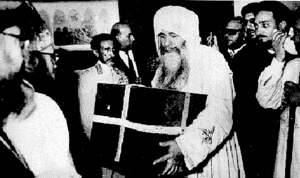
San Cirilo VI llevando las reliquias de San Marcos. Se debe agrandar la imagen para poder ser vista con claridad
(Griego, Markos, latín, Marcus). Se asume en este artículo que el individuo al que se refieren los Hechos como Juan Marcos (12,12.25; 15,37), Juan (13,5.13), Marcos (15,39) es idéntico al Marcos mencionado por San Pablo ( Col. 4,10; 2 Tim. 4,11; Flm. 24) y por San Pedro (1 Ped. 5,13).
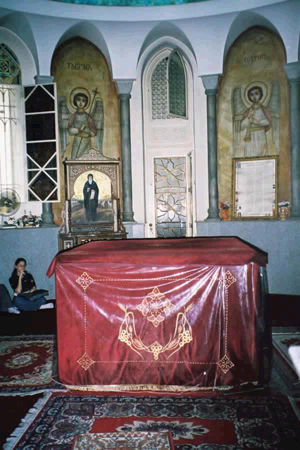
Reliquias de Marcos en la Catedral Patriarcal Copta de El Cairo.
Su identidad no es cuestionada por ningún escritor antiguo notable, aunque se sugiere fuertemente, por un lado por el hecho de que el Marcos de las Epístolas Paulinas era el primo ( o anepsios) de Bernabé (Col. 4,10), a quien el Marcos de los Hechos parece haber estado ligado por algún vínculo especial (Hch. 15,37.39); por otro lado, por la probabilidad de que Marcos, a quien San Pedro llama su hijo (1 Ped. 5,13), no es otro que el hijo de María, la vieja amiga de los Apóstoles en Jerusalén (Hch. 12,12).
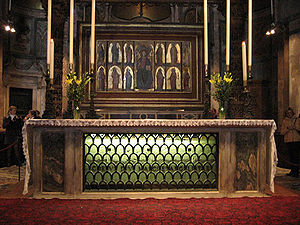
Sepulcro de San Marcos en Venezia.
]] Al nombre judío de Juan le fue añadido el sobrenombre romano Marco, y por este último fue comúnmente conocido para los lectores de los Hechos (15,37, ton kaloumenon Markon) y de las Epístolas. La madre de Marcos fue un miembro prominente de la incipiente Iglesia en Jerusalén; fue a su casa que Pedro regresó después de ser liberado de la prisión; a la casa se entraba por un porche ( pulon), allí había una niña esclava ( paidiske), probablemente la portera, para abrir la puerta, y la casa era un lugar de reunión para los hermanos, “muchos” de los cuales estaban orando allí la noche que San Pedro llegó de la prisión (Hch. 12,12-13).
Cuando, con ocasión de la hambruna del 45-46 d.C., Bernabé y Saulo habían completado su ministerio en Jerusalén, se llevaron a Marcos con ellos de regreso a Antioquía (Hch. 12,25). No mucho tiempo después, cuando comenzaron el primer viaje apostólico de San Pablo, llevaron a Marcos con ellos como una especie de asistente (hupereten, Hch. 13,5); pero la vaguedad y la variedad de significado del término griego hace incierto saber en qué capacidad precisa actuó. Sin haber sido seleccionado por el Espíritu Santo, ni delegado por la Iglesia de Antioquía, como lo fueron Bernabé y Saúl (Hch. 13,2-4), probablemente Marcos fue tomado por los Apóstoles como alguien que podía ser de ayuda general. El contexto de Hch. 13,5, sugiere que él ayudo incluso en la prédica de la Palabra. Cuando Pablo y Bernabé resolvieron avanzar desde Perge hacia el interior de Asia Menor, Marcos se separó de ellos, si, de hecho, no lo había hecho en Pafos, y regresó a Jerusalén (Hch. 13,13). No podemos decir con certeza cuáles fueron las razones de su regreso; Hechos 15,38, parece sugerir que le temía al trabajo duro. En todo caso, San Pablo no olvidó el incidente, y por esto se rehusó a llevar a Marcos en su segundo viaje apostólico. Esta negativa llevó a la separación de Pablo y Bernabé, y este último se llevó a Marcos en su viaje a Chipre (Hch. 15,37-40). En este punto (49-50 d.C.) perdemos de vista a Marcos en los Hechos, y no volvemos a encontrarlo en el Nuevo Testamento, hasta que aparece cerca de diez años más tarde como compañero de trabajo de san Pablo, y en la compañía de San Pedro en Roma.
San Pablo, al escribir a los colosenses durante su primer encarcelamiento en Roma (59-61 d.C.), dice: “Os saludan Aristarco, mi compañero de cautiverio, y Marcos, primo de Bernabé, acerca del cual recibiste ya instrucciones. Si va a vosotros, dadle buena acogida” (Col. 4,10). Cuando se escribió esto, es evidente que Marcos estaba en Roma, pero tenía cierta intención de visitar Asia Menor. Alrededor de la misma época, San Pablo envía saludos de Marcos a Filemón, a quien menciona entre sus colaboradores (sunergoi, Flm., 24). La intención del evangelista de visitar Asia Menor pudo haberse llevado a cabo, ya que San Pablo, escribiendo a Timoteo en Éfeso poco antes de su muerte le pide que recoja a Marcos y lo traiga con él a Roma, añadiendo: “pues me es muy útil para el ministerio” (2 Tim. 4,11). Si Marcos viajó a Roma en esa época, probablemente estaba allí cuando San Pablo fue martirizado.
Volviendo a la Primera Epístola de Pedro, 5,13, leemos: “Os saluda la que está en Babilonia, elegida como vosotros, así como mi hijo Marcos” (Markos, o uios mou). Esta carta fue dirigida a varias Iglesias de Asia Menor (1 Ped. 1,1) y podemos concluir que ellos conocían a Marcos. Por lo tanto, aunque él rehusó penetrar en Asia Menor con Pablo y Bernabé, San Pablo lo hace probable, y San Pedro lo asegura, que él fue luego, y el hecho de que San Pedro envía saludos de Marcos a un número de Iglesias implica que él debió ser ampliamente conocido allí. Al llamar a Marcos “su hijo”, Pedro podría implicar posiblemente que él lo había bautizado, aunque en ese caso se puede esperar teknon en vez de uios (cf. 1 Cor. 4,17; 1 Tim. 1,2.18; 2 Tim. 1,2; 2,1; Tito 1,4; Flm. 10). No es necesario tomar el término para implicar más que una relación afectiva por un hombre joven, quien tiempo atrás se sentaba a los pies de Pedro en Jerusalén, y cuya madre había sido la amiga de los Apóstoles (Hch. 12,12). En cuanto a la Babilonia desde la que escribe Pedro, y en la cual Marcos está presente con él, no pude caber duda de que se trate de Roma. Todos los primeros Padres que hablan del asunto apoyan la opinión de San Jerónimo: “San Pedro también menciona a este Marcos en su Primera Epístola, cuando se refiere figurativamente a Roma bajo el título de Babilonia” (De vir. Ilustr., 8). Puede decirse que había sido cuestionado por primera vez por Erasmo, a quien siguió un número de escritores protestantes, que ellos podrían haber negado fácilmente la conexión de San Pedro con Roma. De esta manera, encontramos a Marcos en Roma con San Pedro en la época cuando él ya era ampliamente conocido en las Iglesias de Asia Menor. Si suponemos que Marcos viajó a Asia Menor después de la fecha de la Epístola a los Colosenses, que permaneció allí por algún tiempo, y que regresó a Roma antes de que San Pedro escribiese su Primera Epístola, las referencias de San Pablo y de San al evangelista son muy claras y consistentes.
La fecha de la muerte de Marcos es incierta. San Jerónimo ("De Vir. Illustr.", VIII) la asigna el octavo año de Nerón (62-63) (Mortuus est octavo Neronis anno et sepultus Alexandriæ), pero esta es probablemente una conclusión a partir de las afirmaciones de Eusebio ("Hist. eccl.", II.24), de que en ese año Aniano sucedió a San Marcos en la Sede de Alejandría. Ciertamente, si san Marcos estaba vivo cuando se escribió la Segunda Epístola a Timoteo (2 Tm. 4,11), no pudo haber muerto en el año 61 ó 62.; ni Eusebio no dice que Marcos hubiera muerto; el historiador simplemente dice que entonces san Marcos renunció a su sede, y dejó Alejandría para reunirse con Pedro y Pablo en Roma. En cuanto a la manera en que murió, los “Hechos” de Marcos le dan al santo la gloria del martirio, y dicen que murió mientras era arrastrado por las calles de Alejandría; así mismo se cuenta en la Crónica Pascual. Pero no tenemos evidencia anterior al siglo IV de que el santo fue martirizado. Este silencio temprano, sin embargo, no es del todo decisivo contra la verdad de las tradiciones posteriores. Para la supuesta conexión del santo con Aquilea, ver “Acta SS”, XI, págs. 346-7. y acerca del traslado de su cuerpo de Alejandría a Venecia y su veneración allí, ibid, págs. 352-358. E n la literatura y el arte cristianos San Marcos es representado simbólicamente por un león. Las Iglesias Latina y Griega celebran su fiesta el 25 de abril, pero la Iglesia Griega guarda también la fiesta de Juan Marcos el 27 de septiembre.
Fuente: MacRory, Joseph. "St. Mark." The Catholic Encyclopedia. Vol. 9. New York: Robert Appleton Company, 1910. <http://www.newadvent.org/cathen/09672c.htm>.
NUMERO 19/DAN/OPHIUCO/ JUSTICIA/ $$$ / SCORPION / SOPHIA/ SABIDURIA / NUMERO DE ORO PHI/ PUERTA DE ORO
MERCURIO / MIERCOLES / CUARTO DIA DE LA SEMANA/ SEMILLA / SEMEN / LINAJE
|
|
|
|
|
EL PUENTE DE JUAN MARCOS CON VENECIA ES UN OBVIO NEXO DE QUE VIRGINIDAD PARA LA TORA, NO EXCLUYE EL CONCEPTO DE RELACION SEXUAL.
EN EL MISMO TERMINO VIRGEN=VENUS=VENCENDOR=ISRAEL=VENECIA =UTERO FEMENINO
V=SEXO FEMENINO=UTERO FEMENINO
ESO EXPLICA DEL PORQUE JUAN MARCOS ESTA ENTERREDO EN VENECIA. |
|
|
|
|
EL VATICANO ESTA DISEÑADO EN FUNCION A LA FIESTA DE LOS TABERNACULOS (LEVITICO 23:33)-RELACION CON EL LIBRO DE DAN BROWN (THE LOST SYMBOL/EL SIMBOLO PERDIDO)
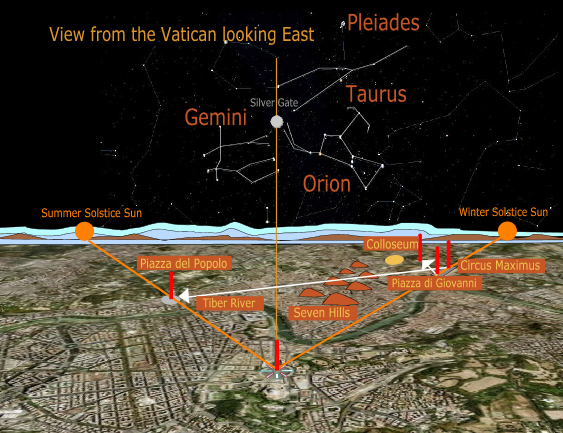
En la pelicula "ANGELES Y DEMONIOS", CON REFERENCIA A EL LIBRO HOMONIMO DE DAN BROWN, el mismo escritor del "CODIGO DA VINCI" se hace referencia a los cuatro puntos cardinales, en el contexto al DISEÑO DEL VATICANO. LA PIAZZA DEL POPOLO (MARIA DE POPOLO), la relaciona con LA TIERRA, osea una referencia al SOLSTICIO DE VERANO, PIAZZA DI GIOVANNI con el solsticio de INVIERNO, en el marco al AGUA, LA PIRAMIDE DE LA PLAZA DE SAN PEDRO, en el marco al equinoccio de OTOÑO (HEMISFERIO NORTE) con referencia al AIRE y MARIA DE LA VICTORIA (REFERENCIA ESOTERICA A MARIA MAGDALENA EN EL CONTEXTO A LA RESURRECCION DE NUESTRO SEÑOR=VICTORIA=ISRAEL) con referencia al FUEGO Y AL EQUINOCCIO DE PRIMAVERA (RESURRECCION DE CRISTO). NOTEN QUE IS/ISIS/MARIA MAGDALENA, RA, ELHOHIM/OSIRIS/ORION/JESUCRISTO. LA SOLA REFERENCIA A VICTORIA/VENCEDOR/VENUS/ VENECIA/ SAN MARCOS. Esto explica el nexo con el numero de ORO en el marco a la alquimia de la resurreccion del Señor. VENUS ES SINONIMO DE LA ESTRELLA DE 5 PUNTAS Y EL NUMERO DE ORO PHI. EL MISMO TERMINO ISRAEL=VENCEDOR=VENUS AL ESTAR INTERRELACIONADO CON VENUS EVIDENCIA DE QUE LA RESURRECCION DEL SEÑOR FUE EN LUNA CRECIENTE Y QUE MARIA MAGDALENA ES LA NUEVA ISHTAR. POR ESO LA FUERTE CONNOTACION ALQUIMICA DEL SACRIFICIO Y RESURRECCION DEL SEÑOR. INSISTO PARA QUE QUEDE CLARO, QUE ISRAEL=VENCEDOR =VICTORIA=VENUS.
 LA V CORTA QUE CONTIENE LA LETRA M EN EL CENTRO EQUIVALE A LA V CORTA DE VENUS/VIRGEN/VICTORIA.V=SEXO FEMENINO-A=SEXO MASCULINO. MARIA DE LA VICTORIA ES LA MISMA MARIA LA MAGDALENA.
¿CASUALIDAD QUE LA LETRA M EN EL ABECEDARIO INGLES SEA LA NUMERO 13?
|
CICLO PENTAGONAL ENTRE VENUS Y GEA. LAS CURVAS DE VENUS.
|
|
Pentagonal se refiere al Ciclo formado por 5 ciclos sinódicos.
|
|

Venus y la Tierra danzan en sincronía matemática y geométrica en el salón del Espacio, al son de la sutilísima vibración de la música de las esferas, pues esferas son. El milenario mito de la llamada "Música de las Esferas" es mito mientras no se comprende qué es o a qué se refiere. Es como si una persona no reconociera que los instrumentos musicales suenan y por eso concluye que la "música de los instrumentos" es mito. Sólo le basta escuchar, sentir, vibrar y comprender. Nosotros estamos en una de esas esferas: el Planeta Tierra, aunque si pensamos un poco comprenderemos que es normal que sea posible que no conozcamos la maravilla en la que estamos inmersos ni que participemos activamente en ella, como aquel espectador que está de gratis en un maravilloso concierto y él mismo es un instrumento y se queda dormido, pero no porque la música sea aburrida sino porque no sabe que está ahí.
Cada 8 años, que son 8 órbitas de la Tierra y 13 de Venus, ambos planetas se encuentran 5 veces en sus puntos más cercanos, al mismo lado del Sol, 5 puntos que son equidistantes y que forman los 5 vértices de una estrella de 5 puntas. Puedes pulsar sobre la imagen para ver la animación.
|
|
|
|
Si continúas observando podrás comprobar cómo Venus y la Tierra continúan trazando la figura pentagonal, aunque ya no desde el mismo punto que la anterior. De hecho, comienzan una nueva 2,33 días antes que la anterior. La actual la comenzaron el 8 de junio de 2004 y termina el 6 de junio de 2012. Esto significa que esa estrella de 5 puntas gira también alrededor del Sol hasta dar una vuelta en 1.252 años: un Ciclo mayor compuesto por 156 subciclos Pentagonales (1.252 órbitas de la Tierra y 2.035 de Venus). Así es como los planetas crean los Ciclos Cósmicos. 1.252 años son 457.457 días, que es prácticamente 676 x 676 ó 26x26x26x26 ó (13+13)x(13+13)x(13+13)x(13+13) días.
Aquí puedes verlo de otra manera comenzando desde el 8 de junio de 2004 (cuando se produjo un tránsito de Venus) hasta el 6 de junio de 2012 en que se produce otro tránsito. Puedes hacer click sobre la escena repetidamente.
|
Los números 5, 8 y 13 son números consecutivos de la serie Fibonacci en la que cada número dividido por su anterior tiende al valor del número Phi, el que marca la llamada "proporción divina" de ciertos elementos de la Naturaleza, por no decir muchos o todos, y entre los cuales están las propias piezas que componen el esqueleto de nuestros cuerpos: los huesos. En la vigésima división de la serie Fibonacci, entre los números 6.765 y 4.181, se obtiene un valor de phi afinado hasta el sexto decimal: 1'6180339. También se puede ver que los números de la serie Fibonacci 6.765 y 4.181 como días terrestres convertidos a Tzolkins son 26 y 16 Tzolkin, y mientras el año de la Tierra (365 días) es 1,62 veces más largo que el de Venus (225 días), siendo 1,62 el redondeo de 1,618 que es el valor de Phi, en el ciclo sinódico Venus da 2'6 órbitas y la Tierra da 1'6 (fracciones de 26 y 16). Y por fin, reproduciendo los tres números de la serie Fibonacci 5, 8 y 13 en el ciclo pentagonal resulta que 5 es el número de encuentros entre La Tierra y Venus durante 8 órbitas de la Tierra y 13 de Venus.
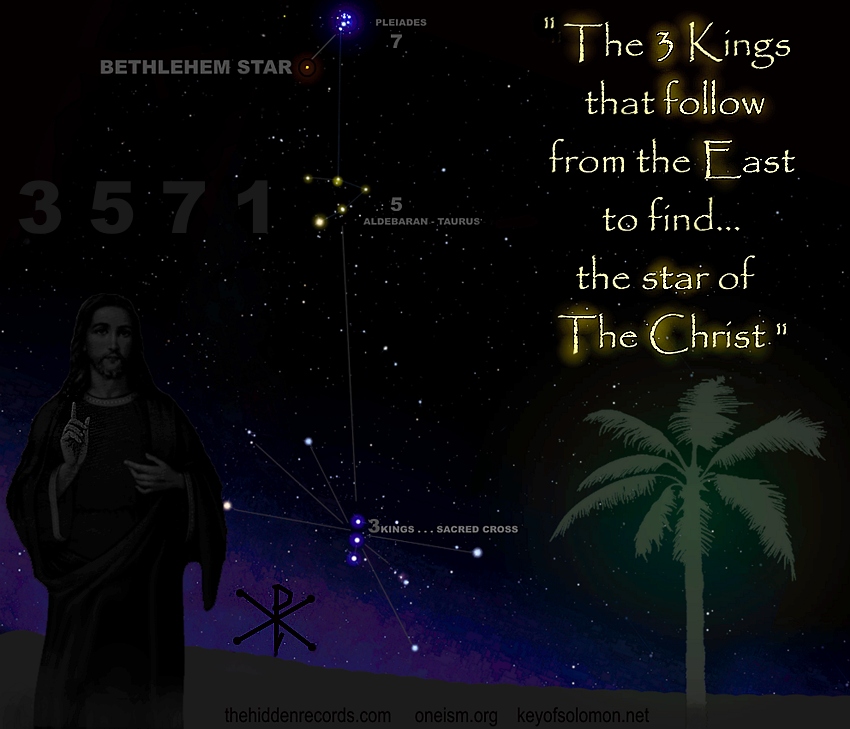
8. Mateo 16:18: Y yo también te digo, que tú eres PEDRO, y sobre esta roca edificaré mi iglesia; y las puertas del Hades no prevalecerán contra ella. (JUSTO ADONDE ESTA ALDEBARAN, LA ESTRELLA ROJA DE LA CONSTELACION DE HYADES, ENTRE ORION Y PLEYADES)
19. Y a ti te daré las llaves del reino de los cielos; y todo lo que atares en la tierra será atado en los cielos; y todo lo que desatares en la tierra será desatado en los cielos.
2. Job 38:31: ¿Podrás tú atar los lazos de las Pléyades,
O desatarás las ligaduras de Orión?
Si ustedes observan el DISEÑO DEL VATICANO, EL CASTILLO "SAN ANGELO", que es adonde esta ubicada la bomba esta en un contexto a los mismos equinoccios, osea en la misma linea incluso QUE EL DISEÑO DEL MISMO VATICANO QUE ESTA DISEÑADO CON EL MISMO PATRON DEL TEMPLO DE SALOMON Y DEL TABERNACULO, OSEA ORIENTADO ESTE A OESTE. LA BOMBA DE ANTIMATERIA, en el contexto al "CAMINO DE LA ILUMINACION" que se hace en la misma pelicula y el libro, EN EL CONTEXTO A LA ESTRELLA DE 5 PUNTAS (CASTILLO SAN ANGELO) es una obvia referencia a la ESCALERA DE JACOB O ALQUIMIA, OSEA EL GRIAL. TODO ES ESOTERICO CON REFERENCIA AL SANTO GRIAL. Lo que es increible que esta pelicula FUE ESTRENADA EN EL MISMO AÑO 2010, EL AÑO DEL RESCATE DE LOS 33 CHILENOS Y EL AÑO INSISTO, EN QUE EL 4 DE JULIO CAYO EN SABADO/SABIDURIA/SOPHIA/SABA/REINA DE SABA LUNAR. TODOS SON CODIGOS GRIALICOS. YHWH NOS LLENA DE MENSAJES SUBLIMINALES.
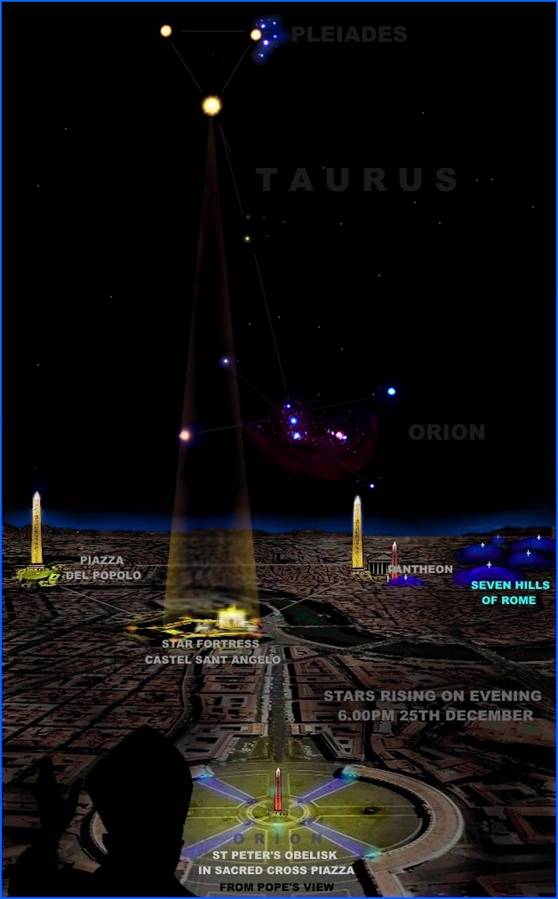 Si observamos la foto superior EL VATICANO, INSISTO, ESTA DISEÑADO EN FUNCION DE ESTE A OESTE, OSEA QUE LA PLAZA DE SAN PEDRO/LLAVE/ORION/ESTRELLA DE 8 PUNTAS/EAST STAR ESTA UBICADA HACIA EL ESTE. EN EL EQUINOCCIO DE PRIMAVERA (22 DE MARZO), ORION, SE ENCUENTRA EN EL ESTE AL MEDIO DIA U HORA SEXTA BIBLICA, EN EL CENITH A LA PUESTA DEL SOL Y EN EL OESTE A LA MEDIA NOCHE APROXIMADAMENTE Y EN EL EQUINOCCIO DE OTOÑO (22 DE SEPTIEMBRE) EN EL ESTE A LA MEDIA NOCHE, EN EL CENITH A LA SALIDA DEL SOL Y EN EL OESTE EN EL MEDIO DIA.
CONCRETAMENTE EL DISEÑO DEL VATICANO, AL ESTAR LA LLAVE EN EL ESTE ESTA EN FUNCION a la foto superior esta cercano al 22 de septiembre. EL OBELISCO DE WASHINGTON D.C CUMPLE CON ESTE PATRON.
En los equinoccios la luz del sol choca con el ECUADOR. Noten en la foto superior ORION, POR LA MEDIA NOCHE, en WASHINGTON D.C POR EL ESTE. CON ESTO SE CONFIRMA EL MONSTRUOSO DISEÑO DE WASHINGTON D.C Y EL VATICANO, CON UN FUERTE MARCO CON EL SANTO GRIAL.
|
|
|
|
|
MARIA DE LA VICTORIA (VENCEDOR=ISRAEL), SI O SI, ES MARIA LA MAGDALENA, PORQUE LA PASCUA (EQUINOCCIO DE PRIMAVERA EN EL HEMISFERIO NORTE) TIENE REFERENCIA AL ESTE, QUE ES CUANDO LA LUZ SOLAR PENETRA ADENTRO DEL TEMPLO DE SAN PEDRO DEL VATICANO. LA LUZ SOLAR SE ALINEA, CON LA PIRAMIDE DE LA PLAZA DE SAN PEDRO (ORION=ESTRELLA DE 8 PUNTAS) E INSISTO CON EL TEMPLO MISMO. MARIA LA MAGDALENA, NUESTRA MADRE, FUE LA PRIMERA EN VER AL SEÑOR EN SU RESURRECCION Y FUE ALLI CUANDO JESUCRISTO VENCIO=VENCEDOR=ISRAEL EN LA CRUZ. CONCRETAMENTE MARIA DE LA VICTORIA ES MARIA LA MAGDALENA. |
|
|
 Primeira Primeira
 Anterior
7 a 21 de 36
Seguinte Anterior
7 a 21 de 36
Seguinte Última
Última
|
|
| |
|
|
©2025 - Gabitos - Todos os direitos reservados | |
|
|


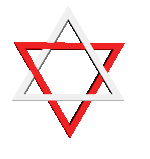




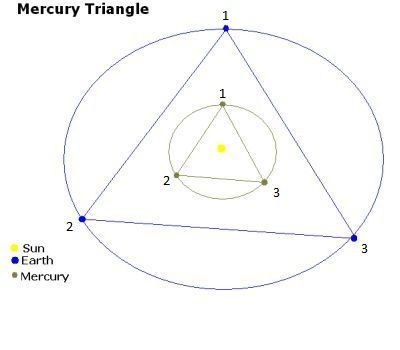
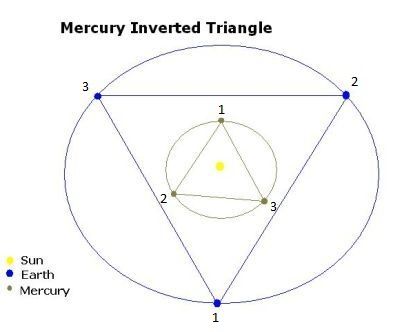
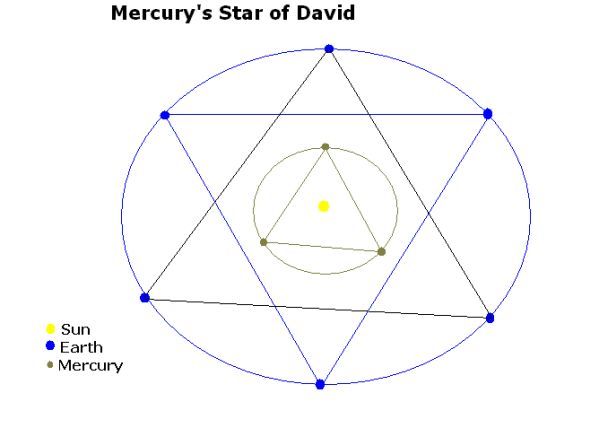


 7
7 15
15 22
22 29
29
